There are a ton of slice-of-life anime out there—an almost overwhelming amount—, and we’re here to tell you the best in the genre.
There is something incredibly compelling about seeing everyday moments on screen. The characters in a slice of life stories are often similar to ourselves, facing the ordinary struggles of life and going about their everyday lives. It doesn’t focus on tight plots or actions in a rigid way.
Instead, this genre invites us to take things slowly and savor the small moments. We learn to cherish the small things in life and pay attention to things we usually take for granted. If you’re looking for some slice-of-life anime that features romance, comedy, or even magic, here are some options for you.
It’s true that action and adventure anime series are taking the spotlight right now, but the “slice of life” genre can be enjoyed by anyone, and it offers a helpful glimpse into Japan’s everyday life for Western viewers.
Since there are no giant robots, monsters, or magical girls to distract the viewer, everyday life itself becomes the main character, which can provide a nice and relaxing viewing experience.
Great Teacher Onizuka

Eikichi Onizuka, a twenty-two-year-old former biker gang leader, Shonan conqueror, and virgin have a dream: to become Japan’s greatest high school teacher. He doesn’t do this because he loves teaching but because he wants a loving teenage wife when he is old and gray.
Nevertheless, Onizuka is more than just a perverted, greedy, and lazy delinquent. He immediately puts all of his skills to the test when he is hired to teach Class 3-4 at the prestigious Holy Forest Academy-despite suplexing the Vice Principal.
They are so utterly contemptuous of all teachers that the class students employ psychological warfare against any new homeroom teacher, forcing them to quit and leave the class. Onizuka, however, isn’t your typical teacher, and he’s always up for a challenge.
His students are faced with bullying, suicide, and sexual harassment on a daily basis. Onizuka supports them with unpredictable and unconventional methods, even if it means rescuing a suicidal child by jumping off a building. Through his eccentric charm and fun-loving personality, Class 3-4 slowly discovers how much fun school can be when you’re a pupil of the Great Teacher Onizuka.
While the story is somewhat cliched, there are some clever twists and plot devices that keep viewers on their toes. You should watch the anime for its sheer entertainment value, even if it conveys a moral message. It will surely make you laugh, and it might even make you cry.
While GTO isn’t a wildly original series, it takes tried and true concepts and injects them with a heavy dose of fresh, funny attitude to create an entertaining series.
Mushishi
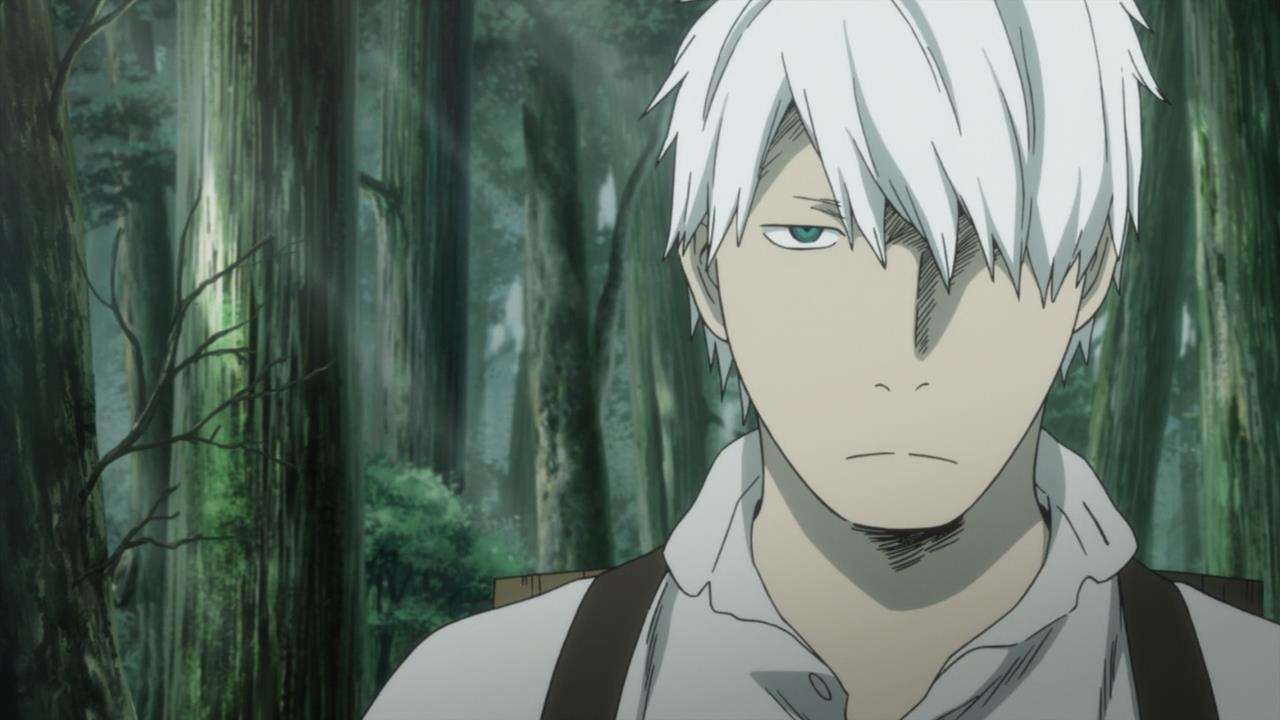
Mushi: the simplest form of life. They don’t have a purpose beyond simply existing. Mushi do not believe in the concept of “good” or “evil.” They can take on countless forms, including plants, diseases, and even conditions like rainbows in the natural world.
It would be simplistic to even describe them as forms of life, given the complexity of the entities that inhabit the vibrant world of Mushishi. Since most humans are unaware of Mushi, detailed information about them is scarce.
What exactly are Mushi, and why do they exist? Ginko, a “Mushishi,” contemplates this question all the time. The Mushishi study Mushi to better understand their place in the world’s hierarchy of life.
For the sake of finding an answer, Ginko chases rumors about occurrences that might be connected to Mushi.
It could even reveal the meaning of life.
Mushishi has only one main character, Ginko. Ginko travels from town to town, researching a phenomenon known as “mushi” and its effects on humans. Additionally, he assists various villages with mushi “problems.”
As a concept, “mushi,” which is neither human nor plant nor animal, but affects the lives of humans, is both intelligent and thought-provoking. Ginko’s way of dealing with these phenomena, whether he is researching or treating them, is even more fascinating. Mushishi’s stories contain valuable lessons and are beautifully crafted.
There is no flashy, grotesque, or absurd story competing for attention in the cliche-ridden anime market. The plot flows like a calm streamlet, contemplative in its very essence.
Violet Evergarden
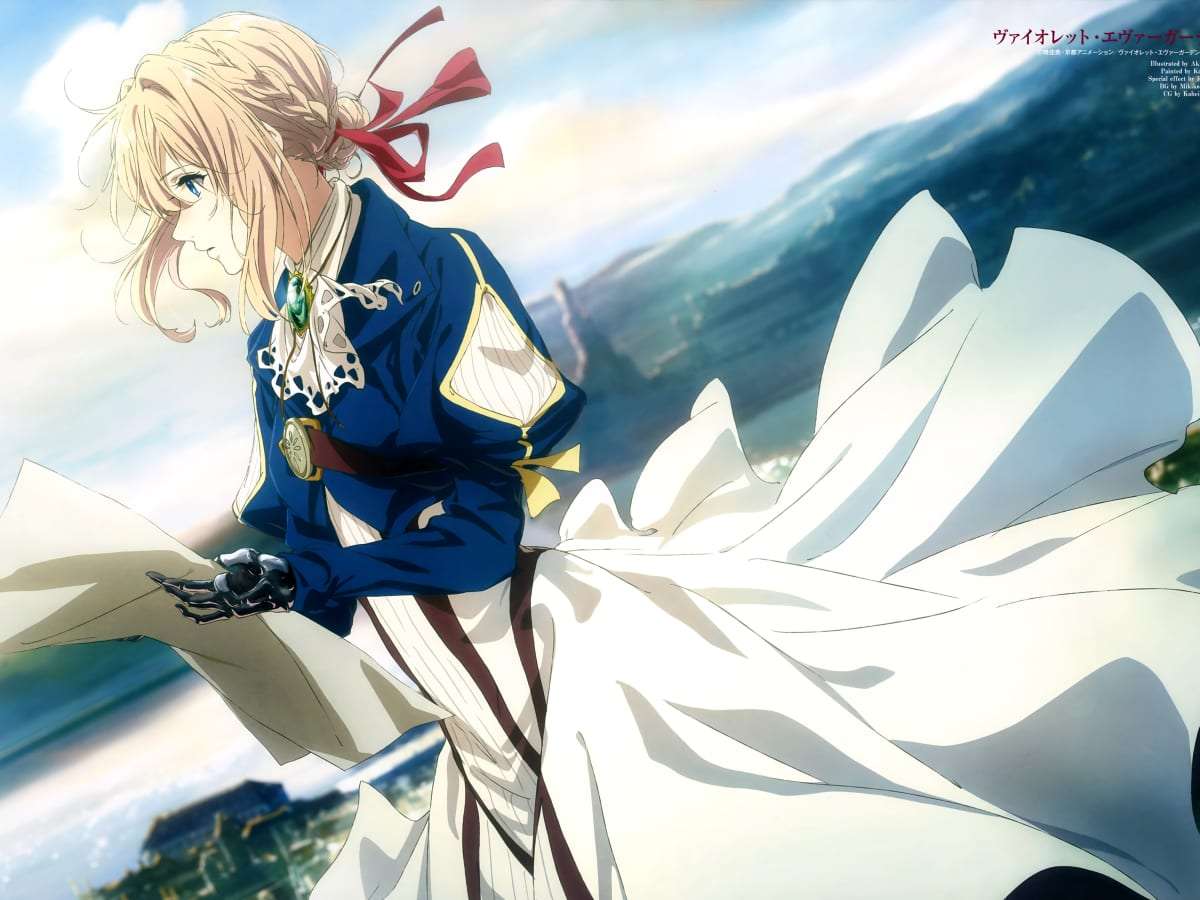
Following four long years of conflict, the Great War finally came to an end. Fractured in two, Telesis slowly began to thrive again. Violet Evergarden, who was raised for the purpose of destroying enemy lines, became involved in the bloodshed. After being wounded in a bloody skirmish during the final stages of the war, she was left with only words from her loved one, which she did not understand.
After recovering from her wounds, Violet starts over at CH Postal Services after a falling out with her new intended guardian family. During this process, she witnesses by pure chance the work of an “Auto Memory Doll,” which transcribes the thoughts and feelings of people into words. Violet is intrigued by the concept and begins to work as an Auto Memory Doll, a trade that will lead her on an adventure, reshaping the lives of her clients and hopefully leading to self-discovery.
We should not rush through life; every happy moment should be cherished, every hardship endured, and we should all fight our own battles. As a result, the pace is slow, which is appropriate for our characters and Violet’s development. In addition to the beautifully composed OST and the subtle visuals accompanying the characters’ stories, the emotional atmosphere evokes raw emotions from viewers.
Essentially a love letter to life, a lesson in overcoming obstacles and moving forward. Each episode gets better and better, just like wine does as it ages.
This show focuses mainly on Violet, with those who appear from episode to episode receiving additional character development. This show stands out for its concise characters and well-written stories. The audience feels fulfilled as a result.
Ookami Kodomo no Ame to Yuki
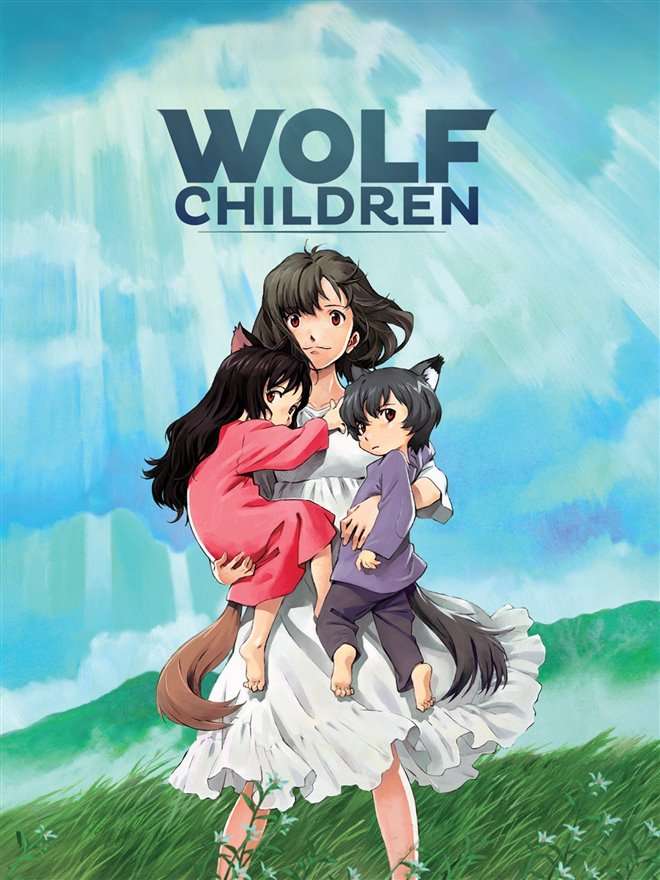
The hardworking college student Hana falls in love with an unnamed man who attends a class of hers even though he is not a student. It turns out that he is also not human. His transformation on a full moon night reveals he is the last living werewolf. Even so, Hana’s love remains strong, and the two decide to start a family.
Hana gives birth to two healthy children, Ame, who was born during rain, and Yuki, who was born during snowfall. Both children inherit their father’s ability to turn into wolves. Sadly, Hana’s life is shattered when her lover dies unexpectedly, leaving her to raise an odd family on her own.
In a densely populated city, raising her wild-natured children and keeping their identities hidden leads her to move to the countryside so that Ame and Yuki may live free from society’s judgments. The heartwarming story of the challenges of being a single mother in an unforgiving world is told in Wolf Children.
Although what the film’s title implies is true, it is not the film’s main focus. There is no other theme in the film other than the mother’s love’s enduring power. This film is about self-discovery and change.
Fantasy is handled delicately and gently so as not to overwhelm the story. Transformation hijinks and forced humor or drama are absent. The wolf children are treated naturally. They seamlessly change from wolf to human form and back again. These transformations as they move into and out of their dual identities are some of the best scenes in the movie.
Viewers are easily captivated by Ookami Kodomo’s characters. The character of Hana is one of the most inspiring to be made into an animated film. Her love for her family is evident.
Kimi no Suizou wo Tabetai

The aloof protagonist is a bookworm who is deeply detached from the world around him. He believes that no one is interested in him and has no interest in others. His story begins when he finds a handwritten book titled “Living with Dying.” He quickly realizes it’s a diary belonging to his popular, bubbly classmate Sakura Yamauchi.
Then she confides in him about the pancreatic disease she is suffering from and how short her time is. Even her best friends are unaware of her terminal illness; only her family knows. Despite this, he shows no sympathy for her plight, but caught in the sea of Sakura’s buoyancy; he eventually agrees to accompany her in her final days.
With each passing day, the pair of polar opposites’ connection deepens, intertwining through their choices. Through interactions, the two become increasingly connected, intertwining through their choices made every day. Through her nonchalance and unpredictability, she disrupts the protagonist’s impassive flow of life, slowly opening his heart to life’s true meaning and purpose.
Knowing you were going to die in a year, what would you do? Many people want to live their lives to the fullest, fulfilling any desires, traveling to impossible destinations, or perhaps even going on a spiritual quest in the name of God. In the anime film, you will learn how to leave your mark in this world, how death eventually does come to us no matter how we like it, and how it can change the lives of others.
Overall, the anime is a great ride. Thus, it serves as a good reminder to make a good impression on people since they might change due to you – for good or for bad.
Fruits Basket (2019)
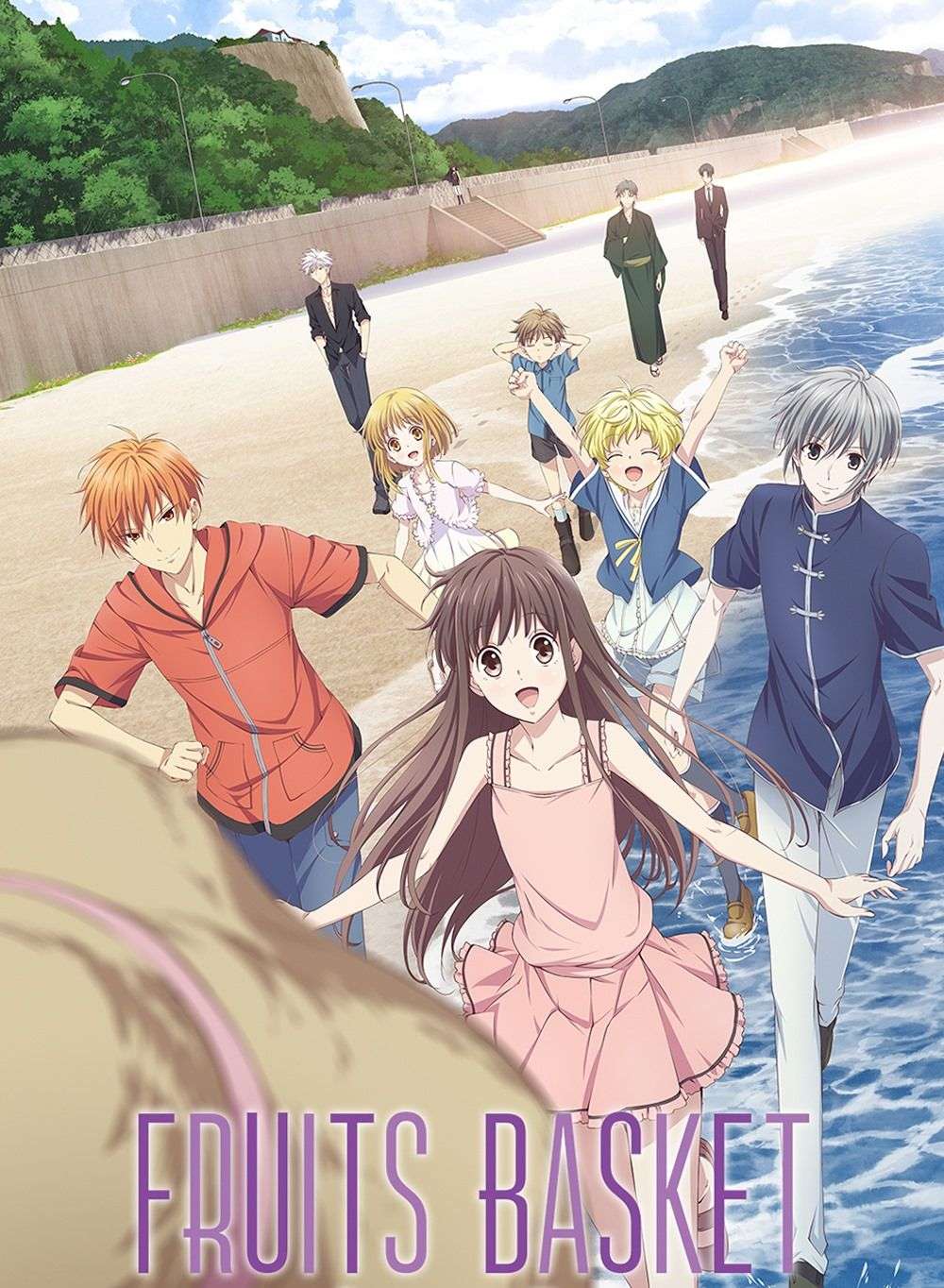
Her mother told Tooru Honda as a child the story of the Chinese Zodiac, and she has always been fascinated by it. Suddenly, a family tragedy changes her life, and she finds herself all alone. Now that Tooru is forced to live in a tent, she is unaware that her temporary shelter lies on the grounds of the wealthy Souma family.
When she stumbles upon their home, she encounters Shigure, an older Souma cousin, and Yuki, her school’s “prince.” Tooru says that she lives nearby, but the Soumas eventually discover her well-kept secret of being homeless after they see her walking back to her tent one night.
As soon as they learn about Tooru’s situation, they kindly offer to take her in. However, she is quickly caught up in a fight between Yuki and his hot-tempered cousin, Kyou. She learns that they have a secret of their own: whenever a person of the opposite sex hugs them, they transform into the animals of the Chinese Zodiac.
Tooru is about to discover that living with the Soumas is an unexpected adventure filled with laughter and romance.
Fruit Basket appears at first glance to be just another Shoujo anime with nothing unique to offer: a pretty and innocent girl who attracts all the handsome boys. Yes, that’s true, but the way the series develops and how each character interacts with one another as the story progresses adds a unique touch to it. It’s a sweet anime with heartfelt themes, and there’s a lot to learn from it. It has everything.
The story of Fruits Basket is incredibly touching. This series doesn’t have a single episode that isn’t entertaining. Each one unfolds and focuses on a different character’s situation.
Josee to Tora to Sakana-tachi

With a passion for diving and an appreciation for marine biology, university student Tsuneo Suzukawa has several part-time jobs to earn the money needed to study abroad. However, one night, a fateful accident forces him to detour from his current path to help a girl with a disability.
Kumiko-who prefers to be called “Josee”-at first, comes off as rude. Tsuneo, however, is persuaded to take on the paid job as Josee’s caregiver by her grandmother. Tsuneo, despite being annoyed by her bossy attitude, sees the opportunity to save more money for his academic dream.
But after putting up with Josee’s behavior for a few months, Tsuneo tries to quit, only to discover Josee’s dreams of going outside and experiencing a life free from her crippling condition.
As Tsuneo changes his mind, he joins Josee in exploring the wonders of the world. Spending more time together makes them realize that the traits that bind them are essential to achieving their dreams.
Josee to Tora to Sakana-Tachi is at once lighthearted and heavy-hearted. Though it has similar topics to some of the other anime out there, it feels nothing like them. Several tropes are present in Josee’s story, including some cliche ones, but it executes them when the time is right, and the result is commendable.
Anyone can experience what happened to Josee or Tsuneo. Anyone can be forced to give up his or her dream, encounter unfortunate circumstances that led them to give up, or not know where to turn in life at some point, and a beautiful aspect of this film is how both of them find the answers and overcome their problems.
Natsume Yuujinchou
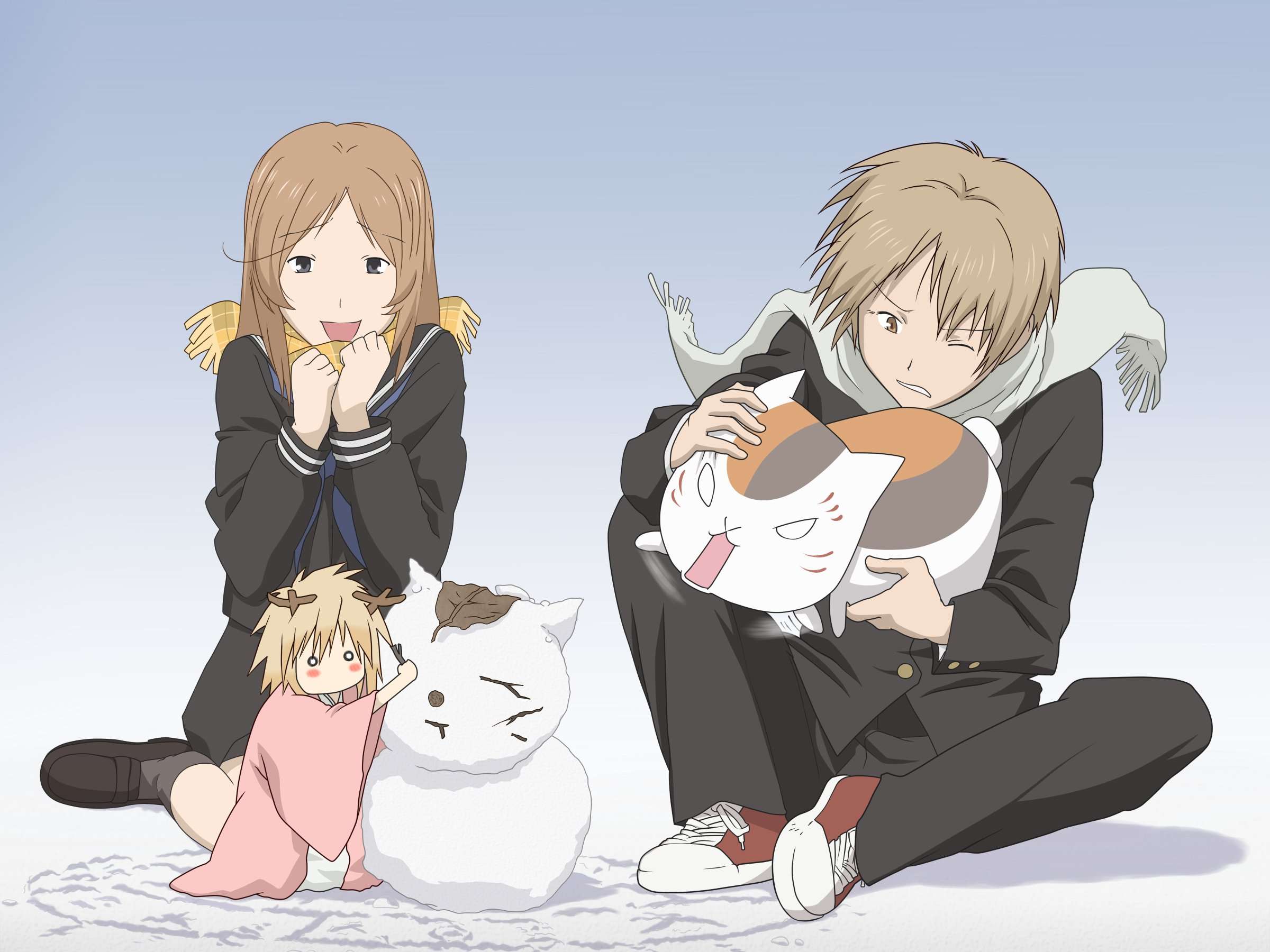
Takashi Natsume, a fifteen-year-old boy, harbors a peculiar and terrifying secret related to youkai: ever since he can remember, these spirits have chased him.
He soon learns that his grandmother Reiko had left him the Yuujinchou, or “Book of Friends,” which contains names of spirits she brought under her control. In Natsume’s possession now, the book gives Reiko’s grandson the same power, which is why these enraged beings now haunt him in the hopes of regaining their freedom.
Being constantly hunted by merciless, hostile youkai, Natsume is seeking solace – a place where he belongs. A self-proclaimed bodyguard named Madara is his only companion. The mysterious Madara, also known as Nyanko-sensei, is a small feline spirit who has his own reasons for staying with the boy.
Natsume Yuujinchou is an unconventional supernatural slice-of-life series following Natsume and his infamous guardian Madara as the two work to free the spirits bound by his grandmother’s contract.
Natsume encounters a different youkai in each episode. It’s sometimes a youkai who wants his/her name back; at other times, it’s a youkai seeking another kind of assistance from Natsume, which he can never refuse.
Natsume Yuujinchou is ultimately about humans, even though those stories revolve around youkai. The story revolves around the bonds between humans as well as between humans and youkai. Throughout each story, Natsume conveys a deep message that he draws from his encounters. These are the reasons why Natsume cannot let go of his bond with youkai and the underlying reason why youkai falls in love with humans.
Uchuu Kyoudai

During a fateful night in the summer of 2006, Mutta Nanba and his younger brother Hibito witnessed what they believed to be a UFO flying toward the moon. As a result of this fascinating and unusual phenomenon, both siblings vow to become astronauts, Hibito aspiring for the moon and Mutta believing his eldest brother should aim for Mars.
In adulthood, Mutta’s life hasn’t turned out as he thought: he works diligently at an automobile company, while Hibito is in the process of becoming the first Japanese man to set foot on the moon. However, after losing his job, Mutta has an unexpected opportunity to catch up to his younger brother when JAXA, the Japanese Aerospace Exploration Agency, accepts his application to participate in the next astronaut selection.
Mutta, despite self-doubts about his prospects, refuses to let this opportunity pass him by and sets out on an ambitious journey to fulfill the promise he made 19 years ago.
In this story, family plays a major role, and not just the Nanba family; however, it is important to note that “family” is not confined to blood relations. It is a theme of sacrifice and the test of friendship that prevails because the road to the top involves leaving many behind – not everyone can succeed.
The descriptions of each character are very detailed, making each one memorable. Motivations and actions reflect the person they have become. Any number of them have the potential to make you fall in love and leave you heartbroken if things do not work out.
This is a delightful anime that combines a heartwarming story with delightful comedy, using realistic characters to show how difficult it is to become an astronaut.
Chihayafuru

Chihaya Ayase is an independent and tomboyish girl who grows up under the shadow of her older sister. Since she has no dreams of her own, she is content with what she has in life until she meets Arata Wataya. As a result of the quiet transfer student, she learns to play competitive karuta, a physically and mentally challenging card game based on the Hundred Poets Japanese anthology.
Chihaya soon falls in love with the world of karuta after being inspired by Arata’s passion for the game and by the prospect of becoming the best in Japan. She joins the local Shiranami Society with Arata and her hardworking but haughty friend Taichi Mashima. The three of them spent their childhood playing together before circumstances separated them.
Chihaya, now in high school, has become an expert in karuta. In order to win the national championship at Omi Jingu, she plans to establish the Municipal Mizusawa High Competitive Karuta Club. Now that she has reunited with Taichi, Chihaya is only one step away from realizing her dream of establishing a karuta team: she must find members who share the same passion as she does for the game.
This show is about more than just card games. For Chihaya, the protagonist of the series, karuta, is also about creating a dream for herself and about the bond she formed with Arata and Taichi when she was 12.
Romance is part of the story, but it is just a development element. Rather than romantic moments, the story is more focused on the love of friendship and the game itself.
The plot of Chihayafuru is primarily character-driven, which can in its own way produce heart-wrenching entertainment. From their design to their personalities, each character has a characteristic to love.
Nichijou

Nichijou primarily follows a trio of childhood friends – high school girls Mio Naganohara, Yuuko Aioi, and Mai Minakami – whose stories soon intertwine with that of a young genius named Hakase Shinonome, her robot companion Nano, and their talking cat Sakamoto.
Every day, the lives of these six and the many people who surround them experience both the calms of normal living and the insanity of the absurd. A typical day in Nichijou includes walking to school, being bitten by a crow, hanging out with friends, and witnessing the principal suplex a deer.
With Nichijou, we get to experience a fusion of gag, moe, slice-of-life, and slapstick comedy. Nichijou adopts a very lighthearted approach with its tone; the jokes are played fast and loose, and the pace changes throughout each episode, but Nichijou never takes itself too seriously.
Unpredictability abounds in the structure of each episode. It’s never predictable what’s going to happen next, whether it’s a funny dialogue scene, a fast-paced action sequence, an amusing still image, or a hilarious but unrelated skit. Even with this seemingly chaotic approach, Nichijou still manages to strike a good balance between its various styles so that none of its episodes feel overwhelming.
Even though such a haphazard approach may seem counter-intuitive for a slice-of-life anime, Nichijou’s haphazard approach works to its advantage, adding another layer to its absurdity. The best thing about Nichijou’s characters isn’t their individuality but how they interact with each other. The personalities of various character groups clash, contrast, and complement each other in extremely interesting ways.
Saiki Kusuo no Ψ-nan
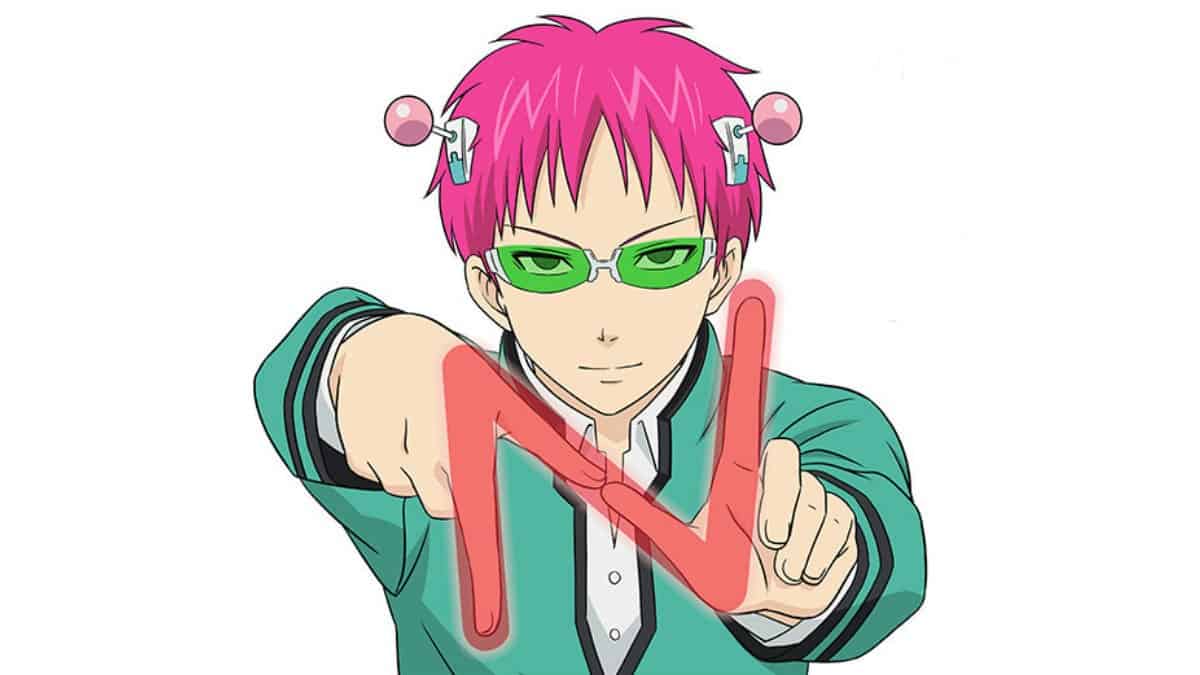
Psychic abilities may seem like a blessing to the average person, but for Kusuo Saiki, this couldn’t be further from the truth. With a wide array of supernatural abilities ranging from telepathy to x-ray vision, he considers this so-called blessing nothing more than a curse. With all the inconveniences his powers cause, all Kusuo wants is an ordinary life without hassles, a life where ignorance is bliss.
Psychic life is unfortunately far from quiet. While Kusuo tries to stay out of the spotlight by keeping his powers secret from his classmates, he inadvertently attracts the attention of several odd characters, such as the empty-headed Riki Nendou and the delusional Shun Kaidou. When Kusuo is forced to deal with the craziness of the people around him, he learns that the life he has been striving for is a lot more difficult to attain than he thought.
Every episode has a core story, but the main story, which is that Saiki Kusuo possesses special powers, persists through all episodes. There are moments that you would not expect.
The characters are all well-developed and distinctive, and they are all clearly related to one another. Saiki’s family, classmates, and anyone he encounters are all weirdos. Every one of them is hilarious and awesome in their own way and won’t leave him alone.
This anime is so enjoyable because of the variety of ways psychic powers can be used. Every episode feels very different from the others because of their multiple purposes.
You will laugh all the time while watching this anime because the humor is fast-paced and maintains a constant level. There is just enough screen time for all of the side characters to become memorable, yet they never feel overused.
Grand Blue
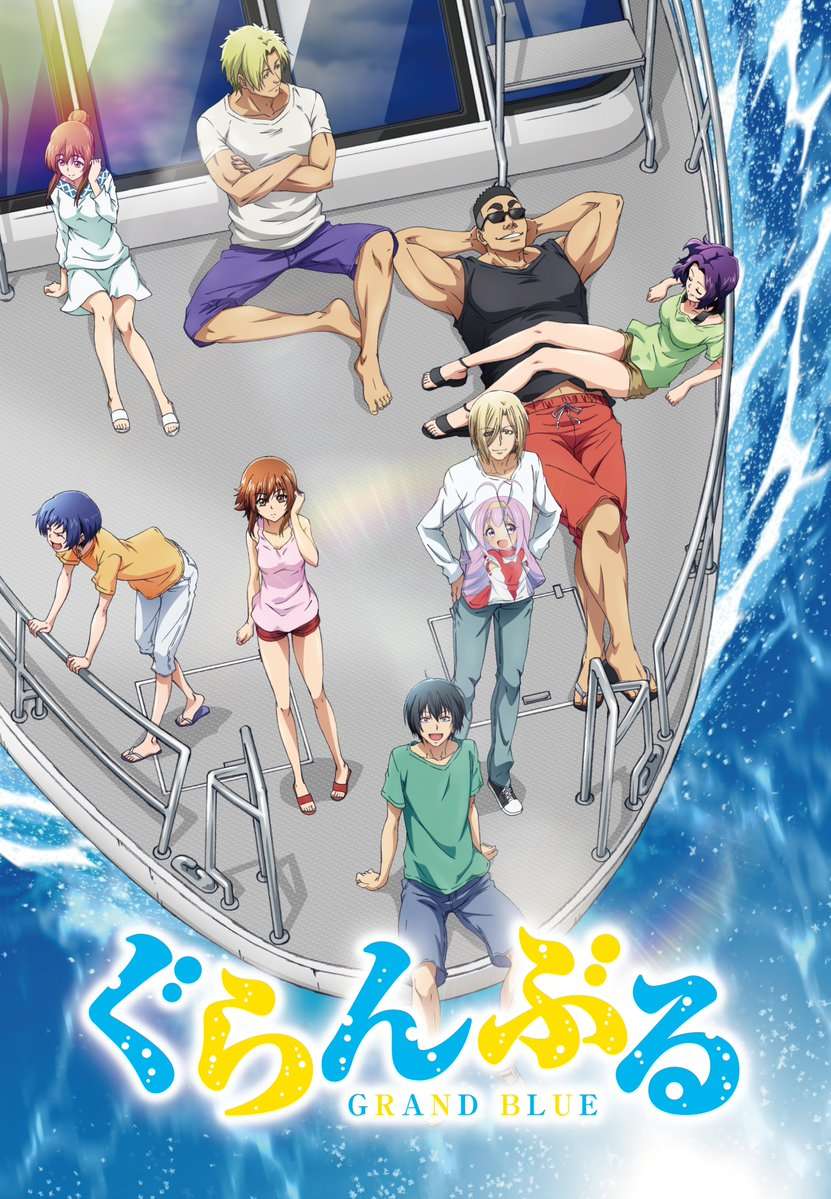
Iori Kitahara begins his freshman year at the university in the coastal town of Izu, living above his uncle’s scuba diving shop, Grand Blue. Iori has high hopes and dreams about achieving the perfect college experience, but when he enters the shop, he is drawn into the alcoholic activities of the carefree members of the Diving Club.
Iori reluctantly joins a bizarre party organized by upperclassmen Shinji Tokita and Ryuujirou Kotobuki. Iori’s cousin Chisa Kotegawa later walks in and catches him in the act, earning her utter disgust.
Grand Blue follows Iori’s misadventures as he tries to fulfill his ideal college dream and also learns to scuba dive with his eccentric new friends.
The college experience is a bit different from high school – it’s like entering a society in which some people follow the rules and others make their own. Grand Blue is a show that explores a carefree lifestyle mixed with adult humor, diving elements, and drinking shenanigans. The show is one of those that is hard not to laugh your ass off to once you realize what you’re in for.
Grand Blue stands out as a slice of life focused on young adults in cultural societies. It often makes fun of its characters. The show mocks college stereotypes, like young adults drinking and partying.
In addition, there is a meta-humor, which uses nuanced jokes. In addition, it is self-aware in that it does not hide its humor. Characters often act unapologetically despite the consequences, which often agitates other characters.
Due to its attempts at glorifying its humor, it appears that this show is a joke. Grand Blue’s themes will captivate you, and you will fall in love with it. This anime plays with itself from adult humor to character gags.
Non Non Biyori

Although Asahigaoka might look like typical, boring countryside to most, there is always some color to the days in this village thanks to the five students of varying ages who attend the only school in the area. Renge Miyauchi, the youngest student, is known for her unbridled wit, curiosity, and catchphrase, “Nyanpasu!”
Next, there are the Koshigaya siblings, composed of Suguru, the older brother, a shy ninth-grader, diminutive Komari, an eighth-grader, and mischievous Natsumi, a seventh-grader. This group of five energetic, vibrant classmates is rounded out by the recent arrival of Tokyo-raised fifth grader Hotaru Ichijou, who appears mature for her age and naturally carries an air of maturity.
In Non-Non Biyori, the characters playfully struggle with the realities of rural life as they engage in their own unique brand of fun and frivolity.
If you sit down in front of the screen and watch this anime, all your problems will disappear – probably within seconds. Everything is perfectly crafted to maximize this effect. And what an effect it is.
The story is simple. Follows the lives of four girls of different ages living in the same rural village and attending the same school each day. Everything that happens in the series is based on their daily lives, with events that are both plausible and realistic.
Characters and settings are developed gradually over time so that the series doesn’t lack progress despite being episodic. There are one or two stories in every episode that will melt your heart. While the humor is lighthearted in tone, it adds to this heart-melting effect rather than making you laugh out loud.
3-gatsu no Lion
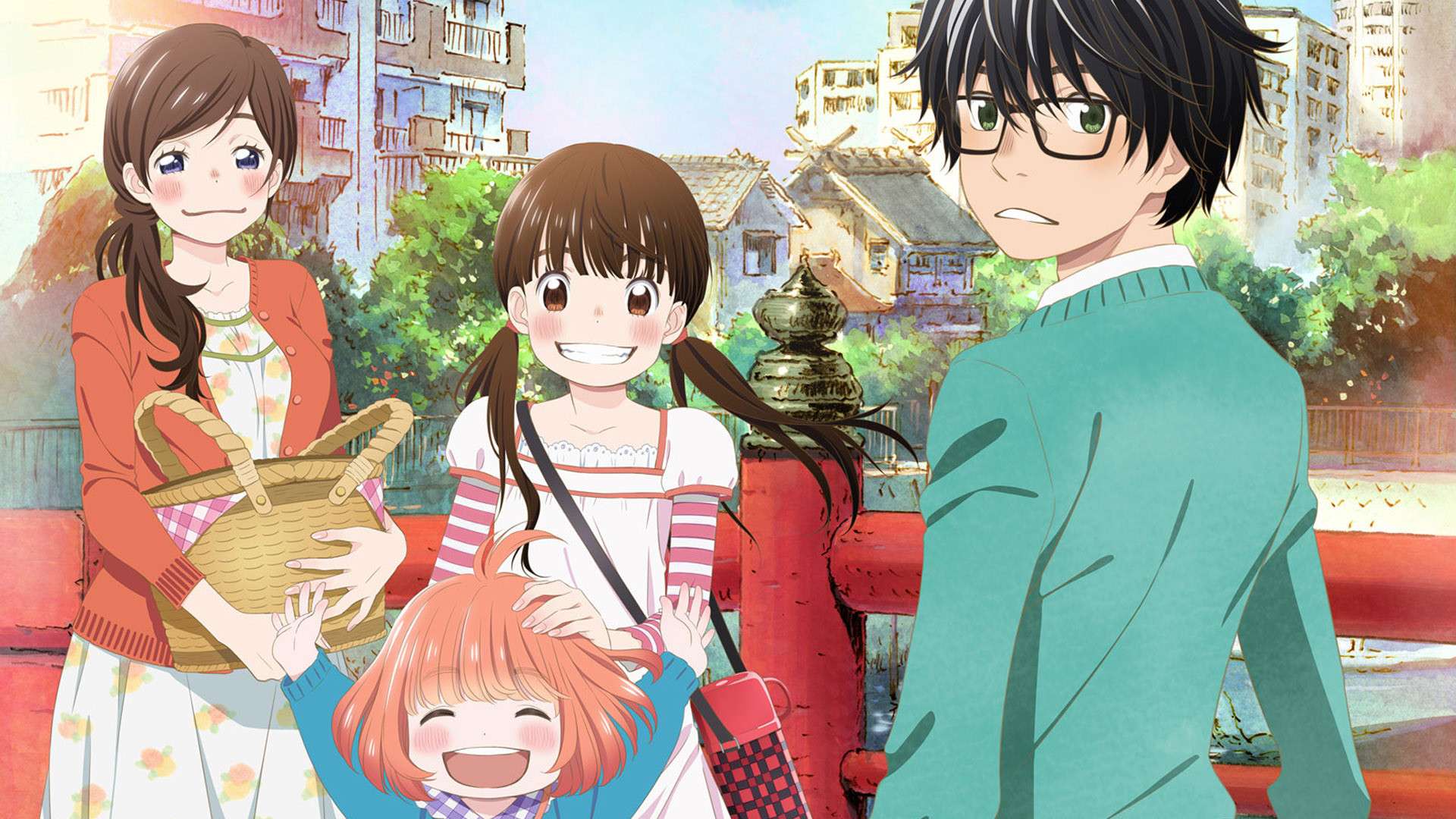
A professional shogi player, Rei Kiriyama is one of the top players, having reached professional status in middle school. As a result, he faces enormous pressure, both from the shogi community and from his adoptive family. As a way of getting away from his tense home life, he moves into an apartment in Tokyo.
Rei, a 17-year-old living on his own, tends to take poor care of himself, and his reclusive nature ostracizes him from his peers in school and at the shogi hall.
Nevertheless, not long after his arrival in Tokyo, Rei meets Akari, Hinata, and Momo Kawamoto, three sisters who stay with their grandfather, who owns a traditional wagashi shop. With motherly hospitality, Akari, the oldest of the three girls, seeks to combat Rei’s loneliness and poor lifestyle.
While coping with past tragedies, the Kawamoto sisters also share a special bond with Rei that he has never had before. Rei must learn how to interact with other people and understand his own complex emotions while he struggles to maintain his physical and mental health during his shogi career.
It would be an understatement to say that 3-gatsu no Lion is powerful. It does so much with so little. The majority of things are left unsaid. A simple, everyday conversation between family members about what their plans for the day are or a brief conversation about one’s hometown can carry more weight and contain more character than a series could.
3-gatsu no Lion is, on the surface, an anime about shogi, but at its heart, it is a coming-of-age story about overcoming depression. Its message is that unhappiness is okay. Stress, depression, and unhappiness do not make you weak – they make you human.
Barakamon
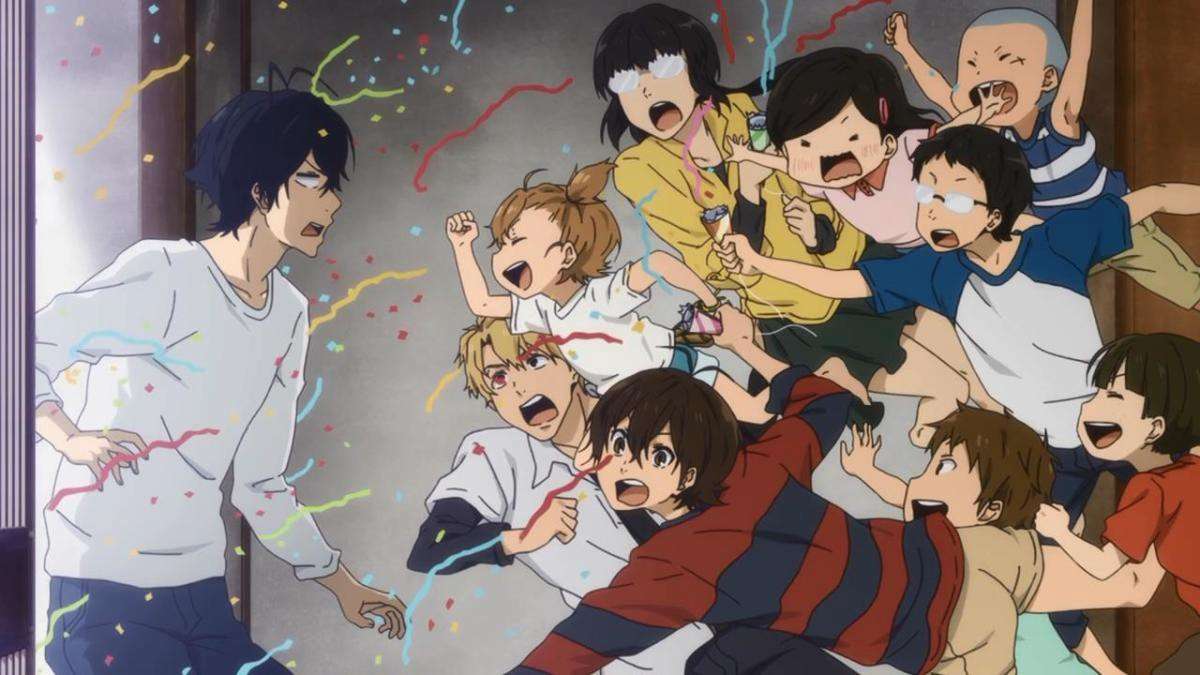
The young, handsome, talented, and unfortunately, narcissistic Seishuu Handa is a promising calligrapher. Seishuu quickly loses his cool after a veteran labels his award-winning work as “unoriginal.”
Seishuu’s father banishes him to the Goto Islands as a punishment and also so he can reflect on himself. He’s far from the comfort of Tokyo life that the temperamental artist is used to. In a rural setting, Seishuu must find new inspiration and develop his own unique style–that is, if the boisterous Naru Kotoishi, fujoshi middle schoolers, and energetic old men don’t bang on the door!
He signed up for a peaceful countryside, but the islands are far from what he expected. The arrogant calligrapher learns more than he ever hoped from his wacky neighbors, who are unable to mind their own business.
A series such as Barakamon shows that there are many ways to create an exciting anime without aliens, magic, or love triangles. Barakamon does not tell a tale of good triumphing over evil or true love between two people, but rather of the fact that our mundane daily lives are compelling enough, no matter what the circumstances are.
Barakamon’s story revolves around its characters. This story follows Handa Seishuu, a 23-year-old calligrapher prone to anger and misfortune, and his friendship with villagers who consistently screw him over. Towards the end of the anime, he has not undergone a great transformation but simply enjoys human companionship.
Instead of using melodrama to develop characters, Barakamon chooses to develop them gradually and in a realistic manner. While Handa and the characters often seem immature, Barakamon is surprisingly mature.
Usagi Drop
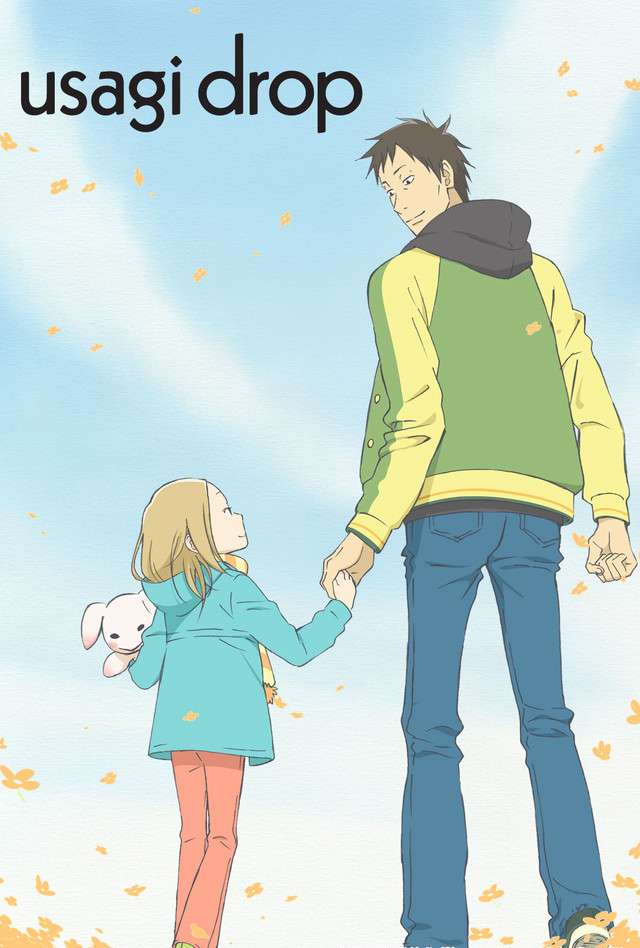
Daikichi Kawachi is a 30-year-old bachelor who has a respectable career, though he wanders aimlessly through life. After his grandfather passes away suddenly, he visits the family home to pay his respects. He meets an enigmatic young girl named Rin at the house who, much to Daikichi’s surprise, turns out to be his grandfather’s illegitimate daughter!
As a result, the unapproachable girl is viewed as an embarrassment by her father’s relatives, and they all refuse to take care of her in the wake of his death. Daikichi, enraged by their coldness toward Rin, announces he will take her in, despite being a young, single man with no experience in childcare.
As Daikichi raises Rin with his gentle and affectionate nature, Usagi Drop is the story of a close-knit family’s warmth and interdependence.
Unlike most shows of this type, there’s no over-the-top melodrama. Some of the problems Daikichi faces are unique to Japanese society, however. There is a measured pace to the story, and the plot adopts a more mature approach to parenting than what one might anticipate.
It is without a doubt that the most interesting character in Usagi Drop is Kawakchi Daikichi. In part, this is due to the fact that most of the story is told from his perspective, but he’s also one of the best-defined male leads in anime.
It is established that he is a complete individual, with his own thoughts, habits, and values, and the narrative does not try to develop him, rather it focuses on his relationship with Rin and the problems, worries, and sacrifices he makes as a parent.
Ano Hi Mita Hana no Namae wo Bokutachi wa Mada Shiranai.
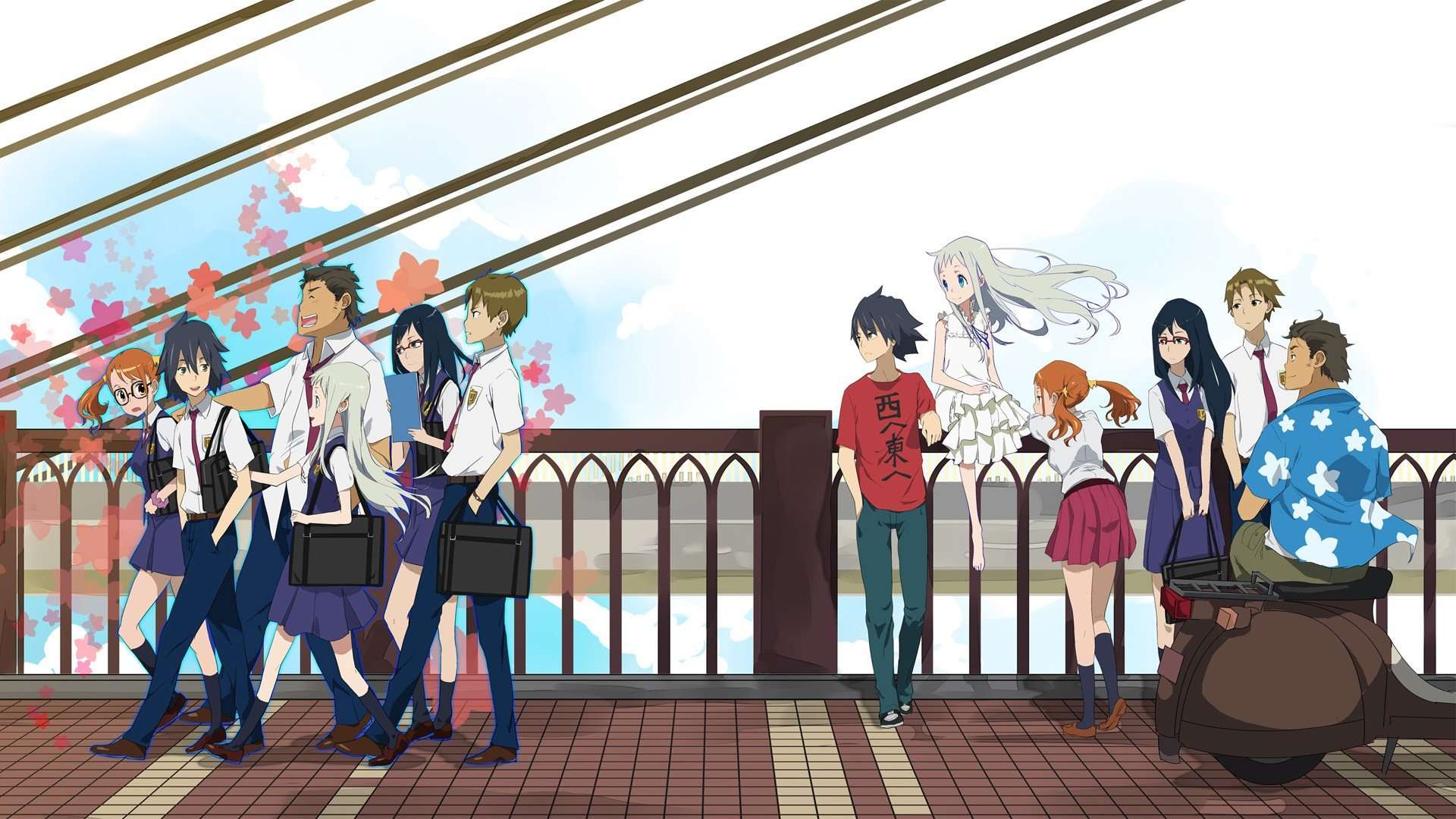
Reclusive by nature, Jinta Yadomi spends his days away from school playing video games at home instead. He is pestered one hot summer day by his childhood friend, Meiko “Menma” Honma, to fulfill a forgotten wish. He ignores her, which annoys her, but he really doesn’t care. Besides, Menma has long since died.
He initially believes he is hallucinating due to the summer heat, but he soon becomes convinced that what he sees is Menma’s ghost. After Menma’s untimely death, Jinta and his childhood friends grew apart but are reunited as they try to lay Menma’s ghost to rest. Re-living their pain and guilt, will they be able to find the strength to help not only Menma move on—but themselves as well?
AnoHana appears to be a simple story about teenagers dealing with past trauma and maturing as a result. In a sense, that’s true. The plot reflects the narrative’s measured, almost methodical approach to events.
Among the most surprising aspects of the anime is the use of flashbacks to punctuate events and give historical context to Jinta, Menma, and the other Super Peace Busters. Despite the current state of the characters’ relationships, these memories serve as a poignant reminder of how much their lives have changed.
There are many distinctive looks among the Super Peace Busters, but it’s their context that makes them stand out.
Throughout AnoHana, we see how children and adolescents cope with past trauma through surprisingly simple and sentimental methods. A truly unique anime like AnoHana is one of the best examples of how good it can be.
Given

As Mafuyu Satou walks out of his dark apartment, he clutches his Gibson guitar tightly for another day of high school. As he takes a nap on a stairway in the gymnasium, he meets fellow student Ritsuka Uenoyama, who castigates him for letting his guitar’s strings rust and break.
Uenoyama’s knowledge of the instrument leads Satou to ask him to fix it and teach him how to play it. Uenoyama eventually agrees and allows him to participate in a jam session with his two bandmates: Haruki Nakayama and Akihiko Kaji.
Uenoyama is enamored with Satou’s voice and is determined to make him the lead singer. Initially reluctant, Satou accepts the offer after an emotional meeting with an old friend. In addition to learning how to play guitar with the help of his new friends, Satou must also come to terms with the mysterious circumstances that led him to own this instrument.
Given is able to strike a rare balance between being openly gay and not overdoing eroticism so as to appeal to a niche audience. Those who are open-minded to love that goes beyond conventional desires will enjoy this sweet, realistic romance.
Unlike other single-course romances, Given does a great job of establishing characters. Each bandmate has practical goals, motivations, and backstories woven into the narratives as the episodes progress rather than being forced into a short time frame.
The methodical progression allows the episodes to flow smoothly since no episode has a dominant character focus. Unlike many romance anime series today, Mafuyu and Uenoyama’s relationship is grounded on principles that reflect real-life relationships in the real world.
Tenki no Ko

At the moment, rain showers are disrupting the usual pace of life in Tokyo to no end. In this seemingly endless downpour, Hodaka Morishima, a runaway high school student struggling to support himself, takes a job at a small-time publisher. Meanwhile, Hina Amano, who grew up orphaned, strives to support herself and her younger brother by working.
The two fates somehow intertwine when Hodaka tries to rescue Hina from shady men, and the two decide to run away together. Hodaka discovers that Hina has a strange yet astounding gift: the ability to summon the sun whenever she prays for it. As a result of Tokyo’s unusual weather, Hodaka sees the potential of this ability. As a result, Hina is suggested to become a “sunshine girl”-someone who will clear the skies for those in need.
At first, things start looking up for them. However, it is common knowledge that power always comes with a hefty price.
As a result of having this power, a girl who can eliminate rain by praying uses it to her advantage, providing a well-paced storyline as well as a range of realistic yet interesting issues that arise. In a way, the characters in this film are refreshing because they’re not stupid or over-the-top.
Thankfully, there are no annoying anime tropes. They are two teenagers, each with their own problems: one tries to fit in in a strange new environment, the other tries to support her family. It is refreshing and realistic to see the interactions between the two main characters with nuances that make all the difference and propel the plot forward.
Everyone can understand and enjoy the plot of this film. It’s a Shinkai film, so simple doesn’t imply shallowness. In each of his pieces, he explores a theme and conveys a message.
Doukyuusei
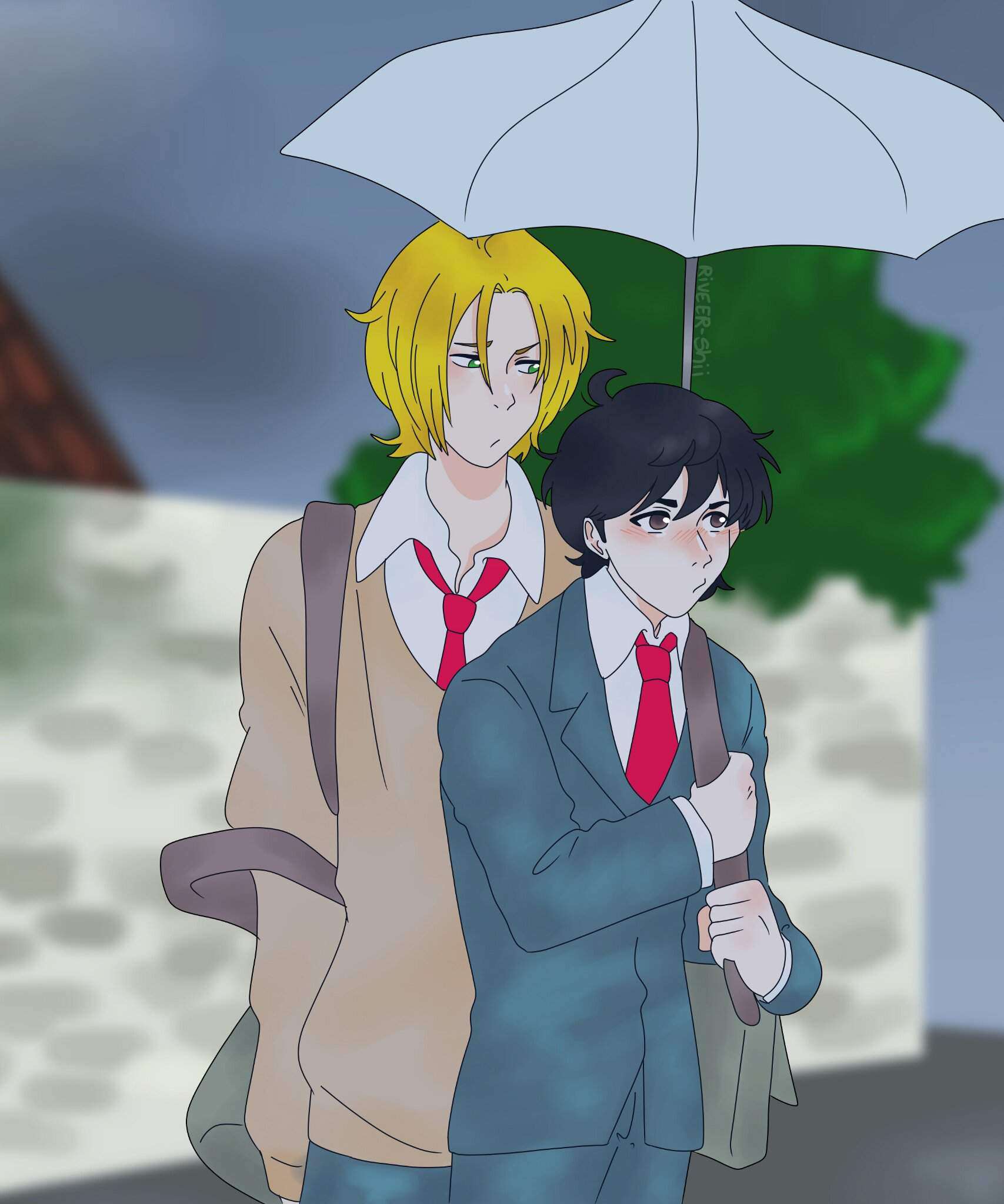
Hikaru Kusakabe, a carefree rock musician, is a normal boy who always focused on the present. He must participate in the upcoming chorus festival with his entire class during the summer. Rihito Sajou, a well-known honor student with excellent grades, is practicing his singing alone when he finds him by chance. Sajou has been struggling to learn the class song, and Kusakabe, pleased at seeing a different side of his straight-laced classmate, offers to help him prepare.
Though their lives and personalities are total opposites, they grow closer as time passes. In the face of an unknown future, what will become of them and their growing relationship?
Despite the short amount of time, the settings perfectly reflect the ups and downs of a relationship without seeming rushed or forced. Beautifully delivered are the pleasures of love, the misunderstandings, the light drama, and the resolution.
A unique art style contributes greatly to the enactment of the story. In these rough-sketch-like pictures and animations, the essence of youth romance is perfectly captured. It gives off this feeling of effervescence with its brightly tinted pictures as if it were taking you to the sky.
Kusakabe is a musician who spends most of his time with friends and practicing with his band, while Sajou is a quiet academic who spends most of his time at cram school and worrying about college. It’s adorable how they deal with each other.
Rather than having a push-and-pull relationship, both characters show equal amounts of love for each other. Supporting characters provide drama to the story and a deeper appreciation of the MCs’ feelings for each other. Cast members are kept to a minimum, which is a good choice since the movie only lasts for an hour and is already crowded.
Beck
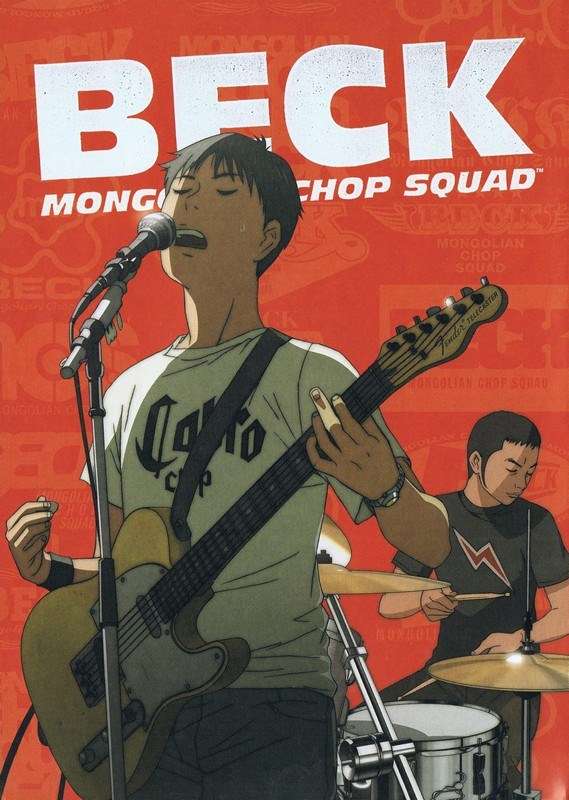
A 14-year-old boy named Yukio “Koyuki” Tanaka is a dispirited youngster with no goals to aim for in life. All of this changes when Koyuki saves a strange-looking dog named Beck from being harassed by a group of local kids. Ryuusuke “Ray” Minami, the dog’s owner, is a 16-year-old guitarist and former member of a popular rock band.
Koyuki and Ray reunite at a diner, and Ray leads Koyuki to the former band’s meeting place, where he amazes Koyuki with his guitar skills. Slowly becoming fascinated by western rock culture, Koyuki decides to learn guitar while helping Ray achieve his dream of forming the ultimate rock band.
In addition to Ray’s sister Maho and a few others, the two boys form a band called BECK that launches their careers into the world of rock. Beck chronicles the group’s struggles and successes as they spread their fame across Japan.
Around this main plot, several subplots develop, usually involving certain members of the fairly large cast. Several well-known brands from yesteryear are referenced throughout the entire series.
Despite challenging circumstances, the characters remain bonded. The series revolves around Koyuki.
We learn everything about the supporting characters from him, so we can view the story through his eyes and from his perspective. If you watch the show, you will know more about Koyuki than anyone.
In addition to some bittersweet romantic moments, there are some hilarious comedy scenes, some intense action scenes, and some melancholy drama. Ultimately, this show is incredibly unique and rewarding, a coming-of-age tale that rings so true and rocks out loud.
Nodame Cantabile
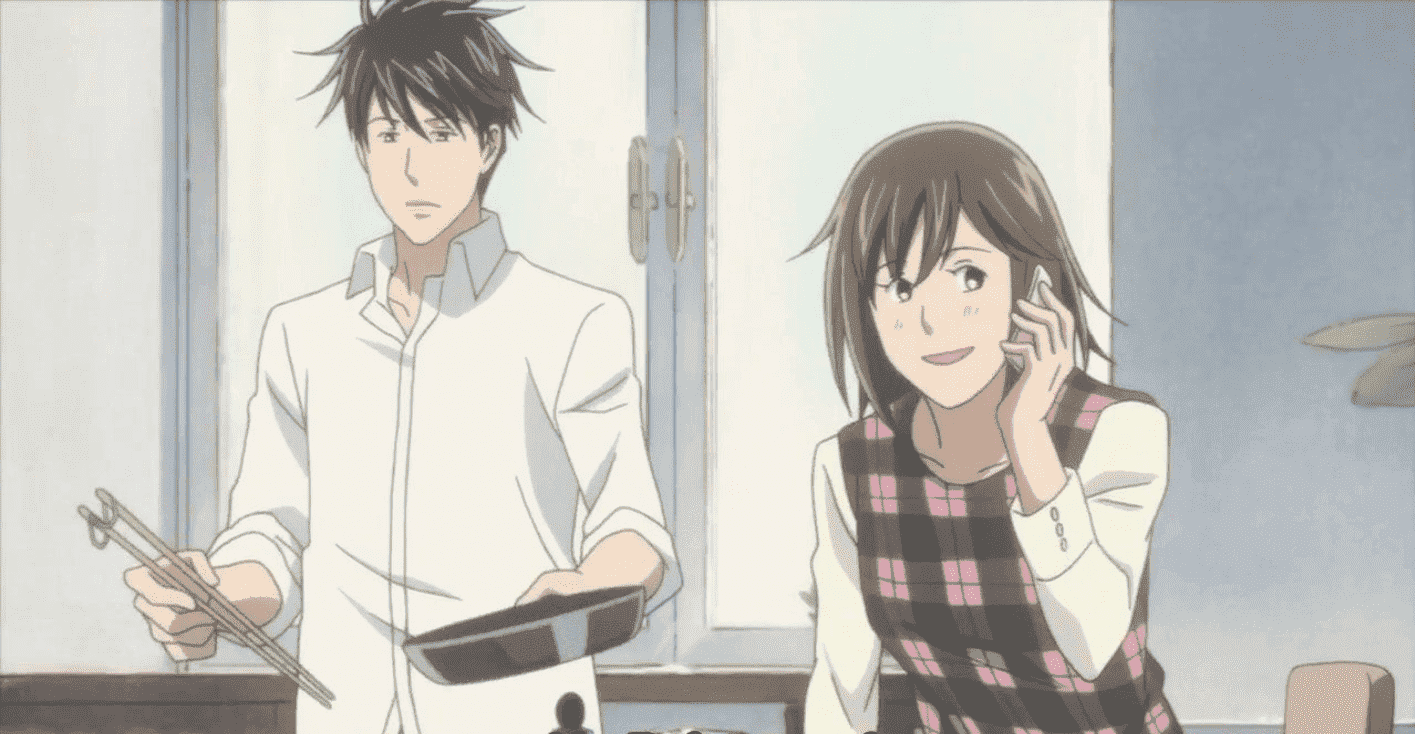
As a first-class musician, Shinichi Chiaki dreams of performing in Europe among the elites. Being born into a distinguished family, he’s an infamous perfectionist. Not only is he harsh on himself, but he’s also hard on others. Shinichi is only prevented from leaving for Europe by his fear of flying. As a result, he is stuck in Japan.
Shinichi meets Megumi Noda at Japan’s top music university, or Nodame as she refers to herself. From the outside, she appears to be an unkempt girl without a direction in life. Shinichi is awestruck when he hears Nodame play the piano for the first time. However, Shinichi is dismayed to find out that Nodame is his neighbor, and worse, she falls head over heels in love with him.
In Nodame Cantabile, the action takes place at a college instead of a high school, so there are clear differences in the mentality and personalities of the characters.
In watching the series, it becomes obvious that the characters are no longer children and that their perspectives on life, the world, and others are different from the ones encountered in the hordes of high school romantic comedies.
The way the characters are used makes this series different from other romantic comedies. Throughout the show, not only the two main characters but the supporting characters also grow as musicians.
Due to its more mature yet whimsical approach to love and life, Nodame Cantabile is a breath of fresh air.
Yuru Camp△
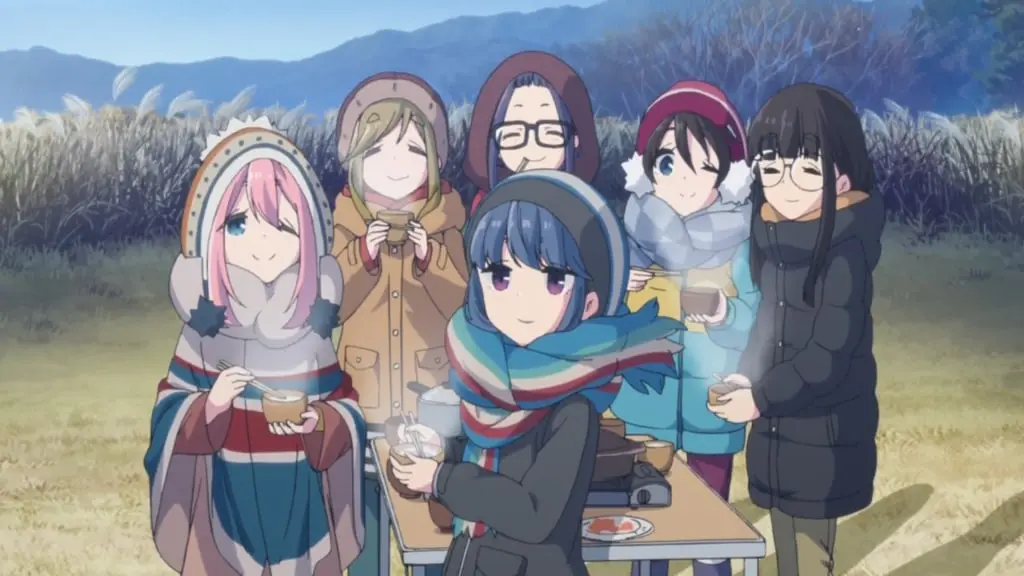
While most girls her age would enjoy a fancy vacation with their loved ones, Rin Shima prefers to spend her days off camping at the base of Mount Fuji alone. She does everything by herself, from pitching her tent to chopping firewood, and doesn’t plan to leave her solitary world anytime soon.
Nadeshiko Kagamihara, who is lost, is forced to take refuge at Rin’s campsite; what starts out as one of Rin’s usual camping sessions becomes a surprise get-together for two. Originally intending to see Mount Fuji’s picturesque view for herself, Nadeshiko’s plans are derailed when she falls asleep on the way.
With no other option, she must ask the only person nearby for assistance. The two girls eat ramen and converse while the campfire keeps them warm during their chilly night together, despite their hasty introductions. Even after Nadeshiko’s sister picks her up later that night, both girls silently wonder if they might go camping again later that year.
Putting on a camping series would be fun, refreshing, and entertaining, who would have thought? Regardless of your mood, you will end each episode with a big smile on your face. This isn’t your typical cute girl show. There is a focus on how to appreciate simpler situations and remain happy in any situation.
In addition, the series transmits that sensation to all viewers. We will remember the girls for a long time as they give us a funny and delightful gem. It is a straightforward, easy-to-follow story that is fun, fresh, and entertaining.
Danshi Koukousei no Nichijou

Three close friends roam the halls of Sanada North High School: Hidenori, the eccentric ringleader with a hyperactive imagination, the passionate Yoshitake, and the rational and prudent Tadakuni. In their colorful imaginations, at least, their lives are filled with giant robots, true love, and intense drama.
They are actually just three ordinary guys trying to pass the time, but who says everyday life can’t be interesting? Danshi Koukousei no Nichijou is filled with bizarre yet hilariously relatable situations that are anything but mundane, whether it’s an intricate RPG reenactment or an unexpected romantic encounter on the riverbank at sunset.
It’s a standard slice-of-life story, but it works amazingly well. Every episode is divided into segments and revolves around a large variety of characters, each with his own peculiarities, enduring daily tasks.
Most segments are short, which keeps the comedic tone light, random, and fast-paced, giving it tremendous enjoyability. There isn’t an amazing and complex plot since it is a slice of life, but the setting and the performance of the comedy match so well that it doesn’t matter how simple the plot is.
The characters are one of this anime’s strongest points since most times; most of the humor is based on the characters in most scenes. It is a very good thing about this series that the main character does not monopolize every scene. In fact, he doesn’t even appear in two or three episodes. Each of the secondary characters plays right into a stereotype, but with a twist.
Yahari Ore no Seishun Love Comedy wa Machigatteiru.
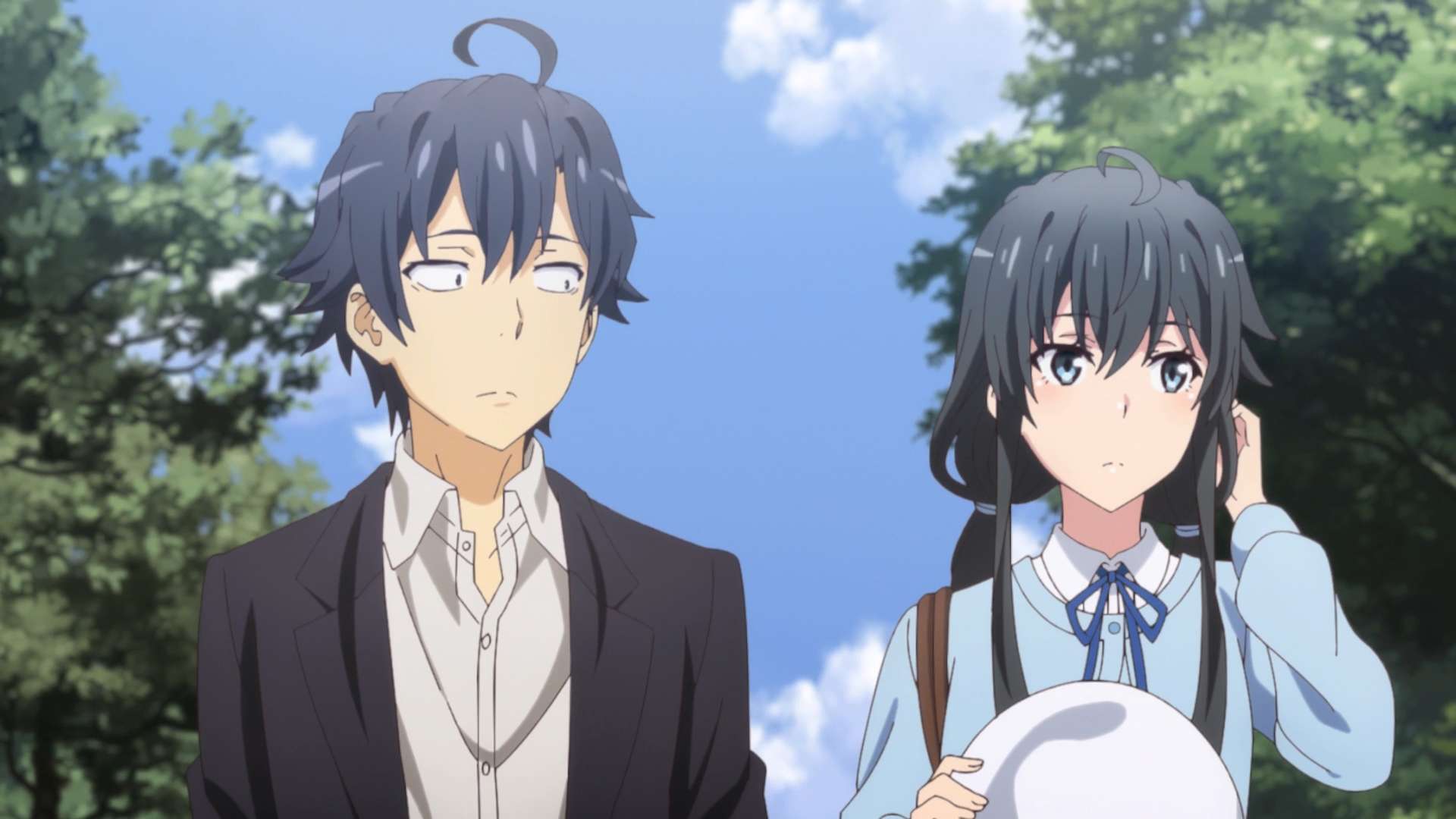
An apathetic high school student, Hachiman Hikigaya has semi-nihilistic and narcissistic characteristics. In his opinion, joyous youth is nothing but a farce, and everyone who says otherwise is just lying to themselves.
Hachiman’s teacher makes him join the Volunteer Service Club for writing an essay mocking modern social relationships. The club offers assistance to students seeking support to achieve their goals.
Because the only other club member is the beautiful ice queen Yukino Yukinoshita, Hachiman finds himself on the front lines of other people’s problems-a place he never imagined he would be. The problems of the students are solved by Hachiman and Yukino, but will Hachiman’s negative view of society act as a hindrance or an advantage?
It’s not the first anime to tackle the anti-social protagonist, but Yahari Ore captures it perfectly with its characters and deadpan writing. It may appear to be your typical rom-com, but you will be shocked by the harsh views of our characters. This is what makes this anime so unique among so many of its kind. It’s charming, funny, and realistic at the same time.
It shows us how students who have been rejected so often decide to play by their own rules, excluding everyone else from the game. After all, it’s much easier to get on by when you only have yourself to rely on. This show is very funny at its core, and the MC’s biting sense of humor and harsh view of the world makes it hilarious.
Komi-san wa, Comyushou desu.
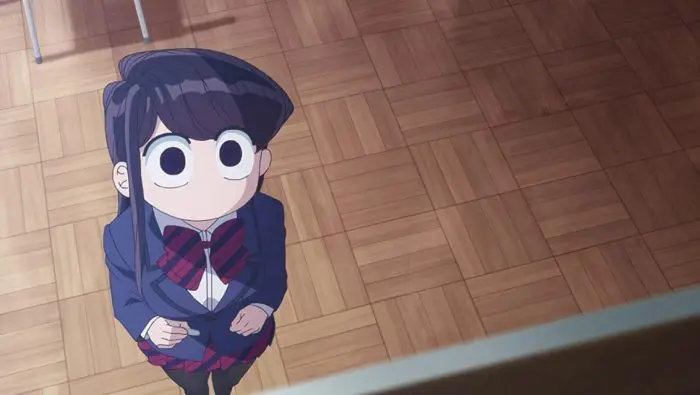
A teenage boy named Hitohito Tadano heads into his first day of high school with a clear goal in mind: to stay away from trouble and to do his best to fit in with the other students. He fails right away when he sits beside Shouko Komi, the school’s madonna. He is now seen by his peers as someone to eliminate in order to sit next to the prettiest girl in class.
Despite her mysterious persona, she is adored and immensely popular because she is beautiful and graceful with long, dark hair. However, she has crippling anxiety and a communication disorder, preventing her from freely socializing with her classmates.
After being left alone in the classroom, a series of events forces Komi to write on the blackboard and have a one-way conversation with Tadano. Tadano is the first person to realize that she cannot communicate effectively, so he picks up the chalk and begins writing. Eventually, he learns that Komi’s goal in high school is to make one hundred friends. As a result, he decides to lend her a helping hand, thus also becoming her first friend.
Komi-san is a story that takes its time properly developing the necessary progression for the characters and the show’s supposed growth. The premise of Komi-san doesn’t offer anything new to the anime genre, but the story and its characters are expertly blended into an incredibly charming show.
Considering the number of characters in this anime, the character development in this anime is quite remarkable. Almost every character is given the screen time and spotlight they deserve. The characters are really relatable too.
Mimi wo Sumaseba
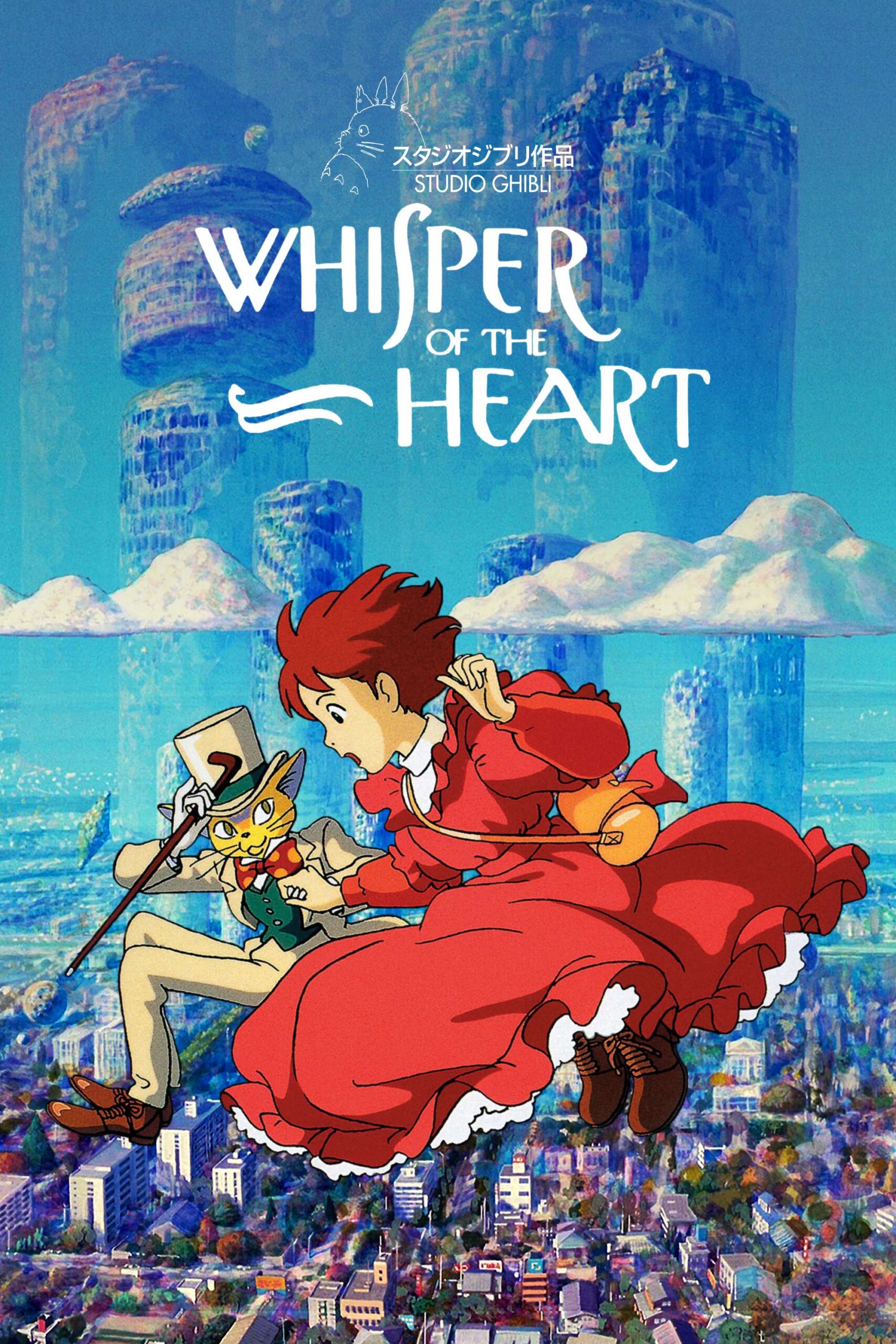
The 14-year-old Shizuku Tsukishima enjoys reading and writing poetry in her spare time. She notices one evening, when she glances at the checkout cards of her library books, that a boy named Seiji Amasawa is frequently checking out the same books. Shizuku becomes curious, and she decides to search for the boy who shares her love for literature.
Upon encountering a peculiar cat on the train, Shizuku follows the cat to a quaint antique shop where she discovers a cat statuette known as “The Baron.” Taking an interest in the shop, she unexpectedly finds Seiji, and they soon become friends. While acquainting herself with Seiji, Shizuku learns that he has a dream he wants to realize, causing her distress as she remains uncertain of her future and has not yet recognized her talents.
She becomes determined to achieve a goal, however, as her relationship with Seiji grows. Inspired by the whispers of her heart and the guidance of The Baron, she resolves to pursue her own potential and dreams.
Now it may seem like any other teenage romance on pen and paper, but this film has its own charm, especially due to the way it presents itself. Interactions between characters are seamless and sound as realistic as possible for a story of this sort. The characters behave as any other teenager would, given the conditions shown.
Despite being fairly ordinary people, the characters themselves are rather eccentric. Shizuku, the female lead, is a charming and adorable girl. Seiji is quite the character himself. The development between Seiji and Shizuku’s romantic relationship, albeit a bit cheesy, is handled with great care.
Horimiya
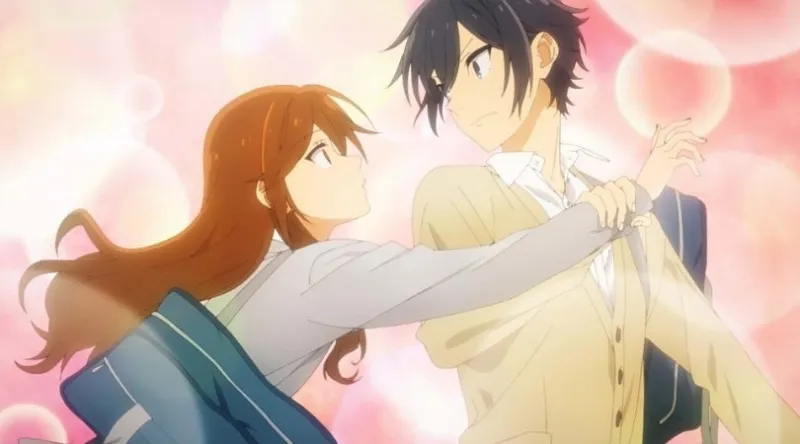
Izumi Miyamura and Kyouko Hori getting along might seem unlikely on the surface. After all, Hori is both beautiful and smart, while Miyamura appears meek and distant. However, a fateful meeting between the two exposes their hidden selves.
At school, Hori is popular, but she has little time to socialize with her friends since she is always busy with housework. Moreover, Miyamura lives under the noses of his peers, with tattoos and piercings that make him appear as a gentle delinquent.
Despite having opposite personalities, the two quickly become good friends and spend a lot of time together at Hori’s house. Upon emerging from their shells, they reveal a side of themselves that has been hidden from the outside world.
The story begins with a misjudgment that leads to a pleasant encounter that develops into a wonderful friendship. The characters in the show are interesting, and their interactions are superb.
Honi is very hardworking and sweet, but sometimes she gets a little confused or surprised, so she has a temper. In his own right, Izumi is a very relatable character, an average guy who keeps his distance and has real feelings when it comes to the new friendships he receives. Their friends are also very supportive of one another.
You’ll be hooked by the artwork, characters, songs, etc., in the first episode. You won’t dislike any character! Horimiya is a standout in this genre. This anime is where you can put your feet up with a cup of tea and relax and enjoy some top-quality entertainment.
Hinamatsuri

Yoshifumi Nitta, a yakuza member, has just acquired a prized vase for his collection when suddenly, a large, peculiar capsule materializes and falls on his head. From the capsule emerges a young, blue-haired girl who says nothing about herself except that her name is Hina and that she possesses immense powers.
As if things couldn’t get any worse, if her powers remain unused, she loses control and causes an explosion. As Nitta has no other choice, he becomes her caregiver.
Nitta asks Hina to assist in a construction deal in order to use her powers freely. During this time, a rival yakuza group attacks his boss covertly. Much to Nitta’s surprise, his colleagues find him at fault! When Nitta is tasked with retaliating against the rival group, he steels himself and reaches their hideout. Hina unexpectedly steps in to help him eliminate the entire group.
Hina might just prove to be of value to Nitta, and his yakuza business provided she doesn’t use her powers on him first! Thus begins the strange life of this unlikely pair.
Hinamatsuri has brilliant comedy at its core. They are all timed and, most importantly, not repetitious, so they are really funny.
The comedy in this series is enhanced by the characters’ reactions to comedic situations. Hinamatsuri is a slice-of-life anime that is funny and has great character development. From character chemistry to peculiar storytelling, every episode leaves you with something to talk about.
Toradora!

Despite his kind nature, Ryuuji Takasu has an intimidating face that often gets him labeled as a delinquent despite his love of housework. In contrast, Taiga Aisaka, a tiny, doll-like student, is anything but a sweet and fragile girl. With a wooden katana and a feisty personality, Taiga is known as the “Palmtop Tiger” in the school.
An embarrassing mistake brings the two students together one day. Upon discovering Taiga’s sweet side, Ryuuji discovers that she has a crush on his best friend, Yuusaku Kitamura, who happens to be the vice president. It gets even crazier when Ryuuji reveals his crush on Minori Kushieda, Taiga’s best friend!
A romantic comedy about a pair of oddballs who embark on a quest to solve their mutual crushes, forming an unlikely alliance in the process.
The story stays away from cliches and is relatively unpredictable for a love story. What makes this series so wonderful are the characters. The characters have personalities that are realistic and believable. In school, there’s no “super” character who acts too good or too cool. The show does not have “that annoying” character that acts snobbish or cocky, which can sometimes be a problem for tsundere characters.
All of this is because every character exhibits a weak side or moments of insecurity, making them more relatable. In addition, it allows for many comedic and emotional scenes. In any case, the best part is the chemistry and interaction between all the characters and how they each change as their relationship grows.
Sakura-sou no Pet na Kanojo

As abandoned kittens and Sorata Kanda’s good conscience force him into Suimei High School’s infamous Sakura Hall, the satellite dorm’s eccentric, misfit residents completely reshape his life. Sorata finds it difficult to fit into a bizarre collection of dorm residents, including Misaki, a lively animator; Jin, a playwright playboy; Ryuunosuke, a reclusive programmer; and Chihiro, a dorm manager, art teacher, and party girl.
Nanami, who is a second-year student and aspiring voice actress, urges Sorata to find new homes for the cats so that he can return to the regular dorms as soon as possible. He quickly becomes attached to the pet-like and infantile second-year Mashiro Shiina, a world-class artist aspiring to become a mangaka who transfers in during the spring trimester.
Through each other’s quirks, Sorata and Mashiro trigger a change in the lives of those around them. Through its ensemble cast, Sakurasou no Pet na Kanojo explores the fine threads connecting talent, hard work, romance, and friendship.
Among the most important features of an anime is its story, which Sakurasou has in abundance. A lot of depth is added to the story by Sakurasou’s characters. As well as the trials they face, the misfits have many small adventures and antics during their stay at Sakurasou. Over time, Sakurasou’s six friends’ friendships grow, bonds are strengthened, and they experience fights, love, and tears.
Throughout the story, we learn about all of their backgrounds. Even though the residents of Sakurasou come from vastly different backgrounds, they all accept one another. They are all true friends, and they have never harbored animosity or resentment for each other. They are so fascinating to watch because of their chemistry.
Kagurahime
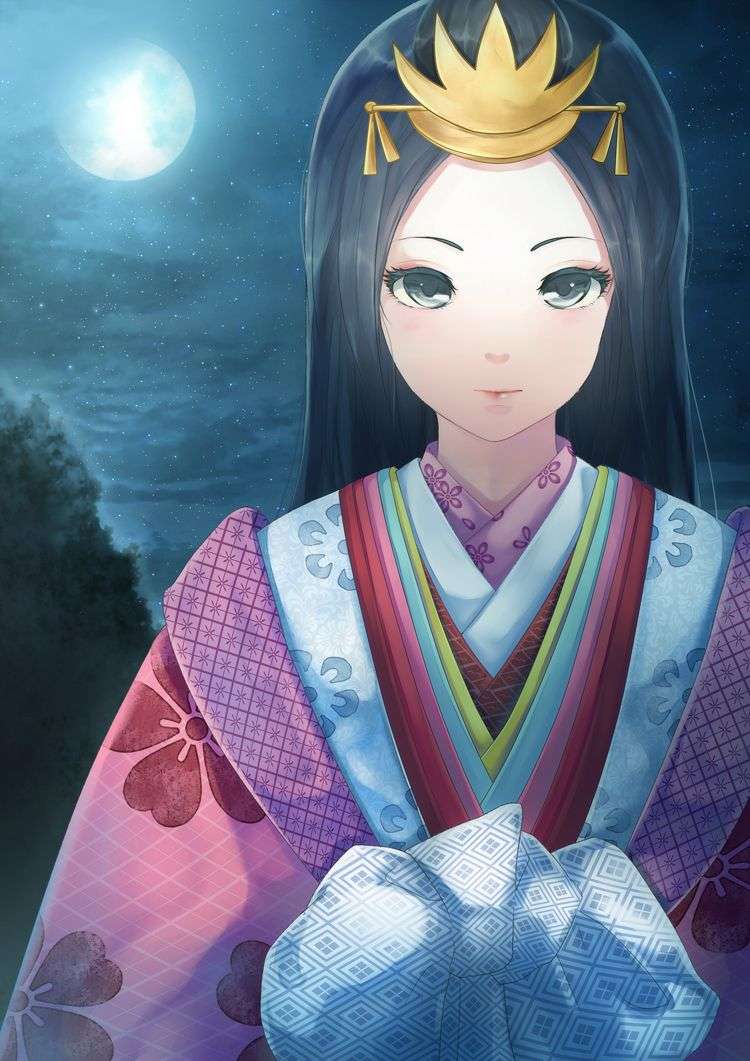
Tsukimi Kurashita has been obsessed with jellyfish ever since her late mother took her to an aquarium when she was a child. She compares their tentacles to that of a princess’s white gown. Living with five other unemployed otakus, 19-year-old Tsukimi dreams of becoming an illustrator.
She changes her life forever, though, when one day, a beautiful woman unexpectedly helps her save a jellyfish at a pet store. In the aftermath, the stranger-confident, stylish, and the complete opposite of Tsukimi and her roommates begin to visit the girls’ building regularly.
Despite appearing shallow at first, this hipster hides some secrets of her own, starting with the fact that she isn’t a girl at all but actually a wealthy male college student named Kuranosuke Koibuchi!
By their personalities rather than their looks, several of the characters are attractive. Its cast of characters is both pleasant and entertaining to watch. This really creates a colorful atmosphere where each personality clashes with one another. By doing this, not only does the story have a charm, but the audience can easily understand and recognize them.
This show never disappoints. In addition to its slapstick comedy, the interplay between its cast of characters is extremely entertaining. In addition, every episode of the series ends on a cliffhanger which keeps the viewer on the edge of their seat.
Despite being lighthearted, Kuragehime has its own depth, and the character interaction alone makes it worth watching. You won’t be disappointed. The replayability of this series is really high.
Hyouka

Houtarou Oreki has only one goal in life: to conserve as much energy as possible while living a gray life. His peaceful days are shattered when his sister, Tomoe, forces him to save the memberless Classics Club from disbandment.
Oreki discovers his predicament is over when he heads to the clubroom and discovers his fellow first-year, Eru Chitanda, is a member already. Oreki, despite his obligation being fulfilled, finds himself drawn to Chitanda’s curious and bubbly personality and soon decides to join the club on his own accord.
Chitanda’s insatiable curiosity drives the four members of the Classics Club, including Oreki’s friends Satoshi Fukube and Mayaka Ibara, to solve the trivial yet intriguing mysteries permeating their daily lives.
It is not just the mysteries that make this anime so enjoyable. Character interaction is also a key factor. There are four main characters in this anime. Each character plays a different role in the mystery. At times, these roles change. It’s fun to solve the mysteries. It’s great to watch the characters interact.
In the anime, each character also undergoes character development. It is an example of how to achieve the high school slice of life genre as the relationships between our characters are compelling yet incredibly realistic, with each action being true to the psychology of high schoolers and how they make decisions.
In Hyouka, there are other characters who interact with the club because the series takes place in a school setting. Several of these are often part of mysteries, requiring a variety of skills from the clubs to solve.
Gin no Saji
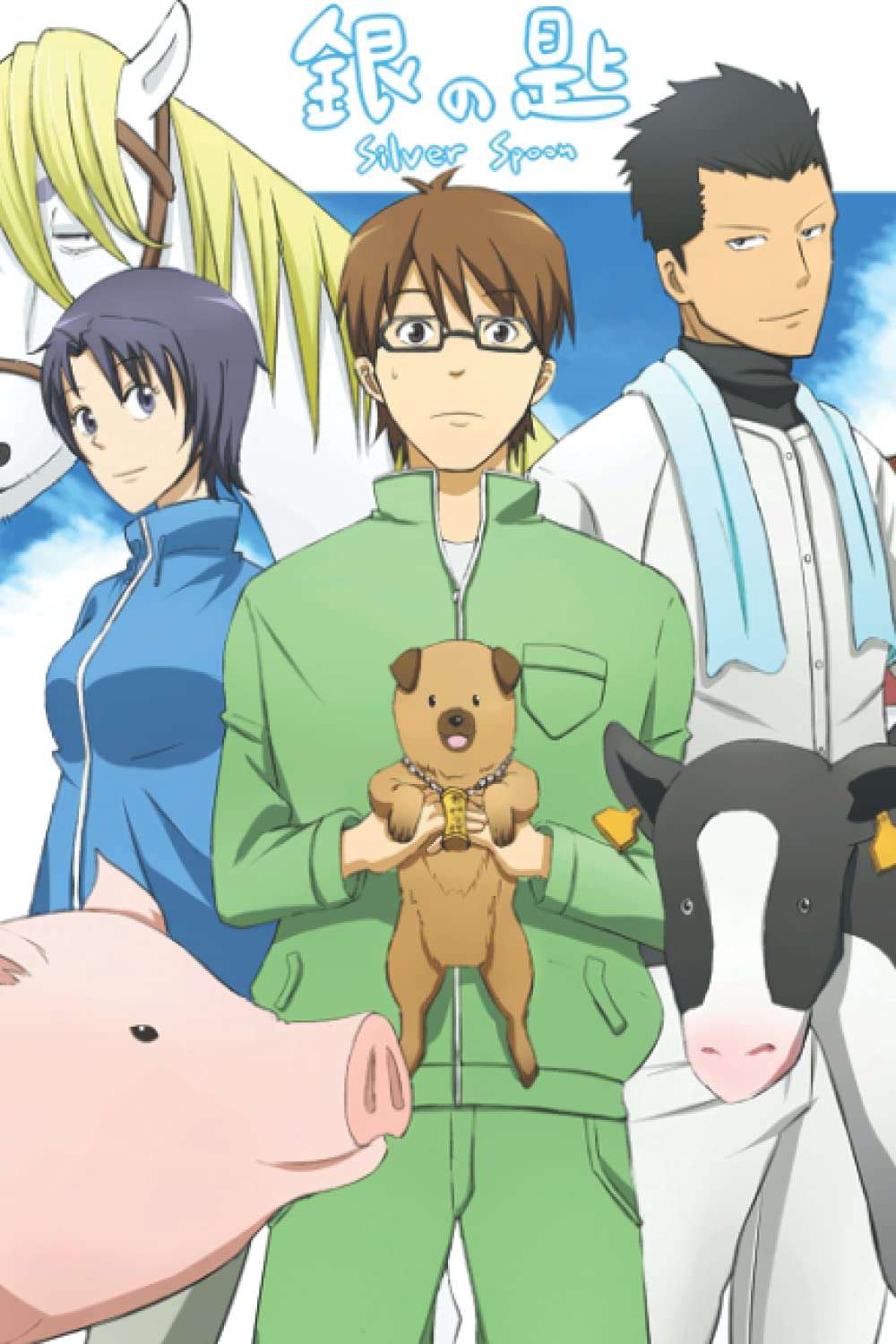
Yuugo Hachiken is a studious, hardworking student who cannot seem to live up to expectations. As the new school year begins, he decides to enroll in Ooezo Agricultural High School in Hokkaido, a boarding school located in the countryside, as a way to escape from the stress brought on by his parents.
Hachiken initially thinks he would succeed at this institution, but he is quickly proven wrong by his talented classmates — people who have lived on farms their entire lives and who know everything about food, vegetables, and even the physiology of livestock! It doesn’t matter how early he gets up to perform strenuous labor or take care of farm animals; Hachiken is simply inexperienced when it comes to harsh agricultural life.
Gin no Saji tells the story of a young student trying to adjust to a completely new environment. Through the course of the story, he meets many interesting characters. He strives to discover his dreams as he tries to appreciate his surroundings in order to lead a rewarding life on his own terms.
Gin no Saji shows how we each have the ability to set our own path and believe whatever we want to believe.
Throughout the anime, Hachiken is constantly put into situations outside of his comfort zone, leading to hilarious developments. Additionally, there’s not too much focus on one character at a time, and instead, they all develop together through their interactions with Hachiken. By advancing at a steady pace, the story allows viewers to get to know the characters and also prevents boredom by providing a change of scenery every few episodes.
Hachimitsu to Clover

A sophomore at an arts college, Yuuta Takemoto, lives in a cheap apartment with two seniors – the eccentric Shinobu Morita, who keeps failing to graduate because of his frequent absences, and the sensible Takumi Mayama, who looks out for Takemoto.
On a fine spring day, Takemoto meets Hagumi Hanamoto and falls in love at first sight. Before that day, Takemoto hadn’t given much thought to his future. A gifted artist, Hagumi enrolls in Takemoto’s university and befriends Ayumi Yamada, a popular pottery student. Ayumi already knows the three flatmates and is secretly attracted to one of them.
Hachimitsu to Clover tells a charming story of youth, love, soul-searching, and self-discovery, intricately woven by the relationships among five dear friends.
Anime can offer a lot more than just entertainment for many of us who watch it. Sometimes, we will connect on an emotional level with a character or characters in a show.
The story will sometimes seem less like a fanciful escape and more like a reflection on society or our own lives. It’s these kinds of shows that stick with us. We’ll laugh, we’ll cry, and at times we’ll realize something new about ourselves. That’s what anime can be like.
The characters definitely make the show. Hachimitsu to Clover, like many other slice-of-life series, falls back on the characters to help carry the series, and all five of the main characters do so phenomenally. Throughout the series, the perspective changes so that we see, hear, think, and occasionally feel what any given character is going through at that time.
Clannad
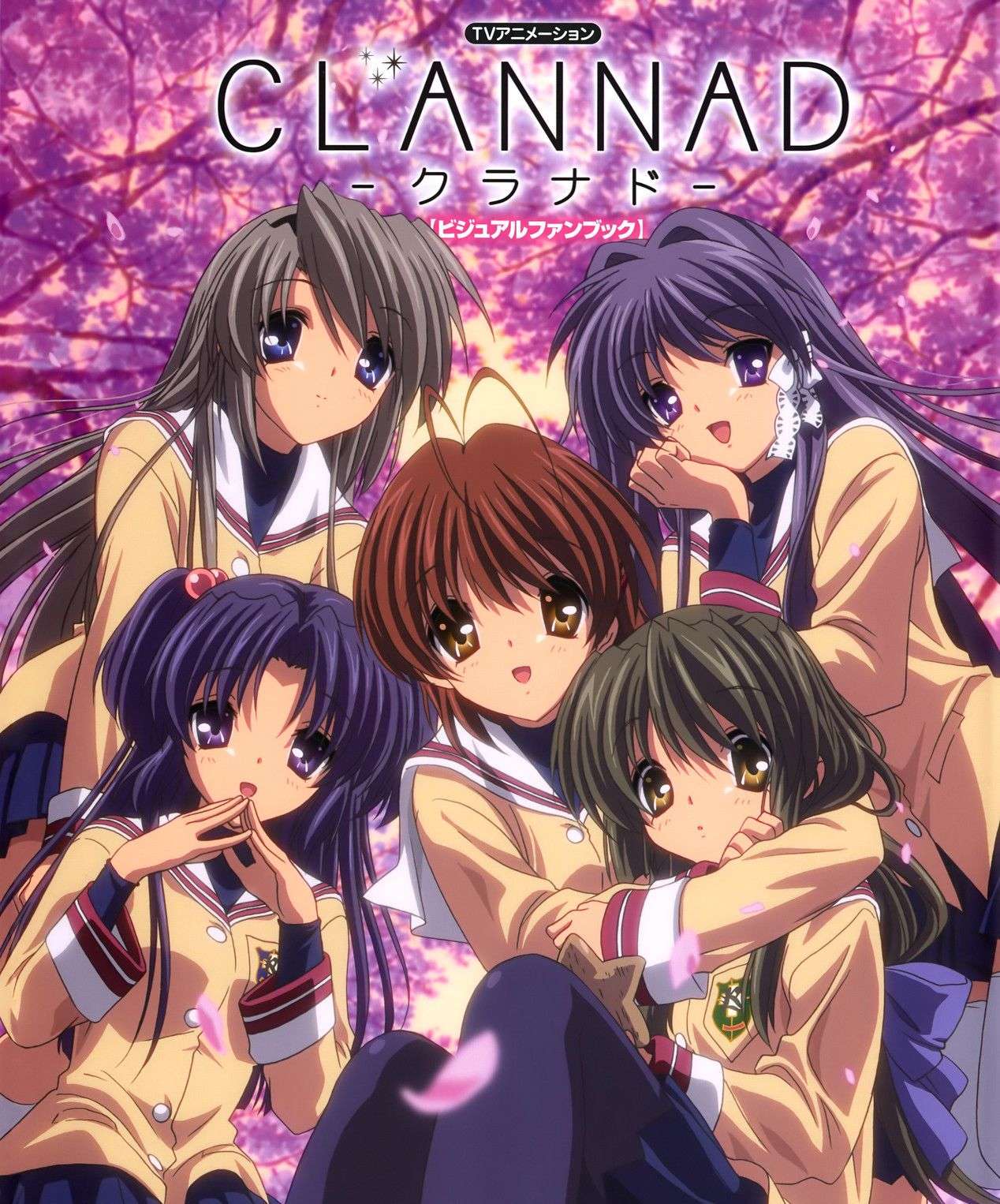
Defiant delinquent Tomoya Okazaki believes he’ll never amount to anything in life. Together with his friend Youhei Sunohara, he skips school and plans to waste away his high school days.
As Tomoya walks to school one day, he passes a young girl muttering quietly to herself. “Anpan!” she exclaims, a popular Japanese food, catching Tomoya’s attention. As he gets to know the girl, he discovers her name is Nagisa Furukawa and that she exclaims things she enjoys in order to motivate herself. Despite Nagisa’s claim that they are friends now, Tomoya walks away as if nothing happened.
However, Tomoya notices Nagisa more and more around the school. Eventually, he agrees to befriend her. Nagisa reveals that she has been held back a year due to a severe illness and that she hopes to resurrect the drama club. As he claims to have nothing better to do, he decides to assist her with the help of four other girls in accomplishing this goal.
Tomoya learns more about the girls and their problems as time goes on. When he helps each girl overcome her obstacle, he realizes that life isn’t as dull as he once thought.
Clannad does an amazing job with the characters once they’ve been introduced. Aside from their struggles being depicted in a gripping, compelling way, they are also shown to become strong individuals who stand by their friends and who are able to face the world and its challenges with greater openness.
Through the drama club, the main characters of the show may just form their own little family. The main and supporting cast in Clannad has unique personalities, at least one of which will pique a fan’s interest.
Eve no Jikan
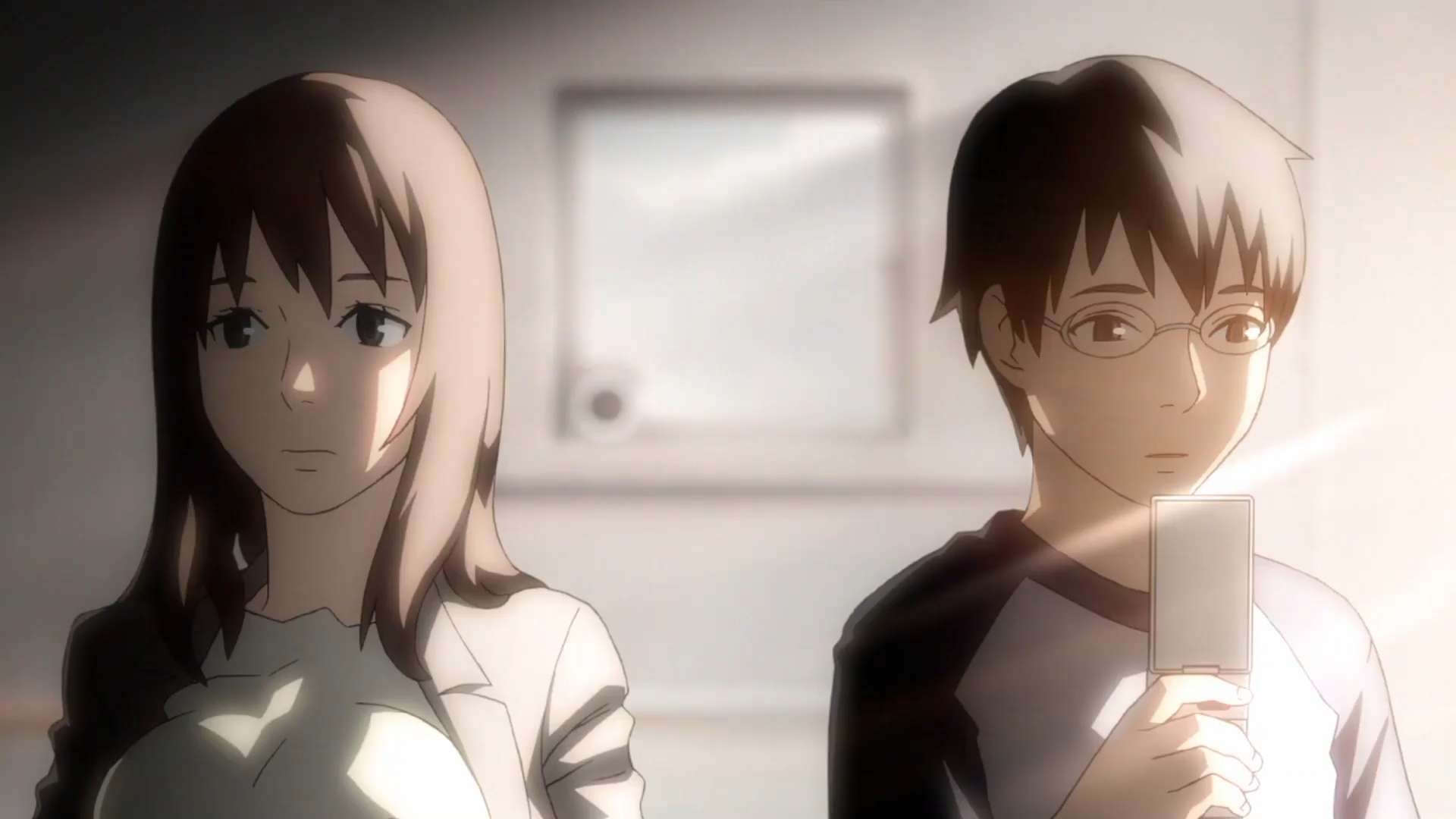
In a future Japan where android housekeepers are common, society strictly abides by the Three Laws of Robotics, which all androids must follow. As a result of the influence of the Robot Ethics Committee, androids are treated the same way as lesser types of technology, like household appliances. However, a small minority adores androids, being referred to as “android-holics,” and are shunned by the general public.
In his upbringing, Rikuo Sakisaka accepted society’s precept that androids are not human. That is until he discovers a strange message in the activity logs kept by his household android, Sammy.
He is led to Eve no Jikan, a cafe that only has one rule: people must not make any distinction between humans and androids. Rikuo is curious to learn more about the shop, and he tries to figure out why Sammy has such strange behavior.
Together, the story and character development make up the strongest aspects of Eve no Jikan. Every episode is essentially a one-shot on a visitor or two to the cafe. On the surface, that may sound mundane, but the screenplay reveals each character seamlessly, precisely, and engagingly. A fast, back-and-forth dialogue and tight pacing are used to achieve this.
You will know just enough about a certain character to be able to understand their conflicts, hopes, and fears, as well as their intertwined lives. You will laugh, cry, jump up in bewilderment, and open your mouth in shock while watching. But that is just for one episode. If you feel jaded and bored with typical animes, Eve no Jikan is a breath of fresh air you ought not to miss.
Honzuki no Gekokujou: Shisho ni Naru Tame ni wa Shudan wo Erandeiraremasen
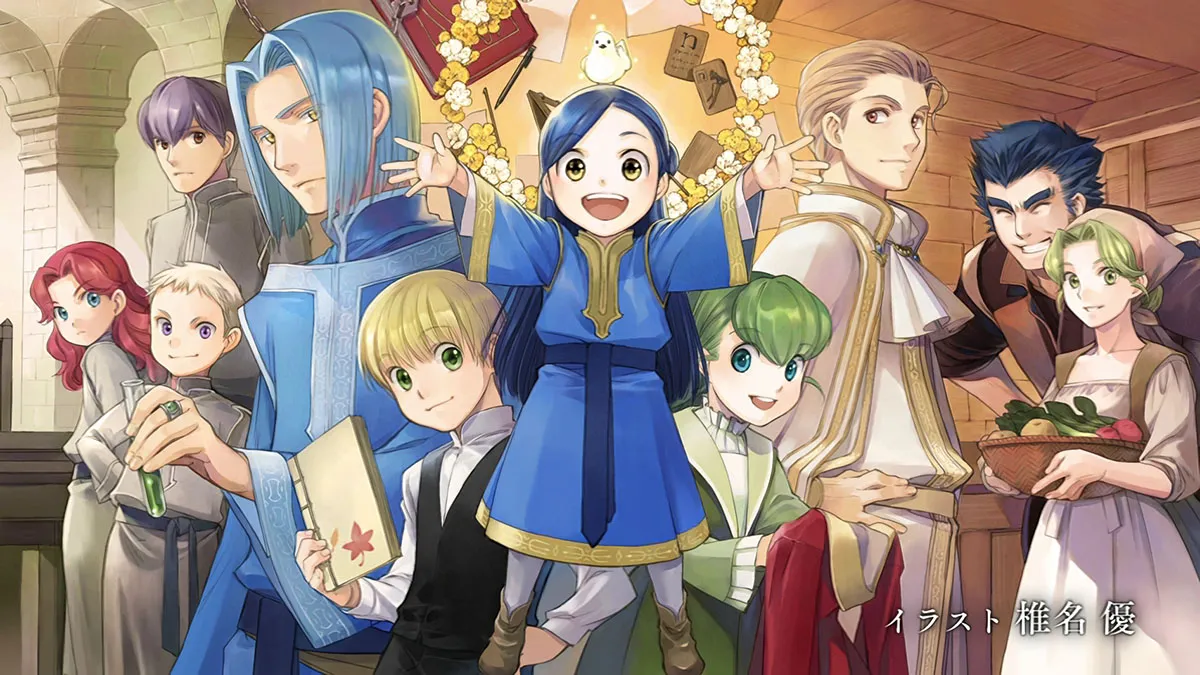
It’s no secret that Urano Motosu is passionate about books and always enjoys reading literature, no matter the subject matter. In an accident, her life is ended before she becomes a librarian, almost fulfilling her dream. She wishes that her next life would allow her to read more books.
She wakes up reborn as Myne-a frail five-year-old girl living in medieval times as if fate had heard her prayer. Her first thought is her passion. When she tries to find something to read, she is frustrated by the lack of available books.
Books would have to be copied and written by hand without the printing press, making them extremely expensive; therefore, only a few are able to afford them. However, Myne will overcome this obstacle. Her love of reading will prove unbreakable, and even if books aren’t available, she will create them!
This anime is extremely grounded and realistic in its storytelling world-building, and even the magic system feels very real and grounded.
This is a tight and focused character piece that doesn’t preoccupy itself with empty flash or needless frills. It feels deceptively quaint and almost procedural compared to most high-concept Isekai anime. Its scale is cleverly stripped back, its pace slowed to a manageable stroll, and its tone kept consistently light.
The show is smart because it is consistent in its niche, and every obstacle that the MC faces doesn’t seem out of place. As a show that focuses on the characters’ relationships and emotions, it succeeds.
Kobayashi-san Chi no Maid Dragon
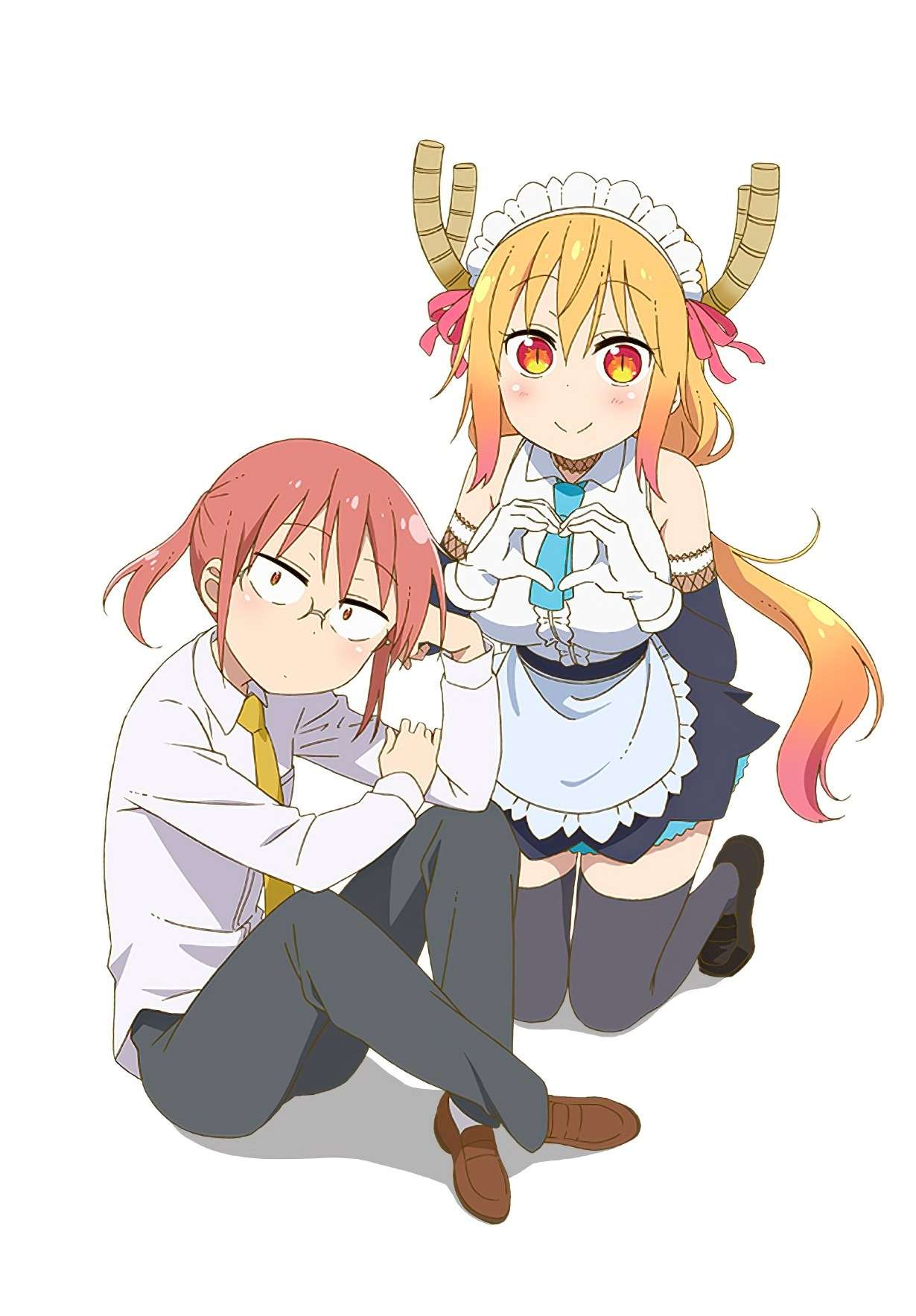
After Kobayashi sets off for another day at work, she opens her apartment door to be greeted by an unusually terrifying sight – the head of a dragon staring out from the balcony. In an instant, the dragon transforms into a cute, busty, and energetic young girl dressed in a maid’s outfit, introducing herself as Tooru.
The stoic programmer had encountered the dragon on a drunken excursion into the mountains the previous night, and since it had nowhere else to go, she invited it to stay in her home.
Tooru accepted the offer, ready to repay her savior’s kindness by becoming her personal maidservant. Kobayashi is deeply sorry for her words and hesitant to follow through on her promise, but a combination of guilt and Tooru’s incredible dragon abilities convinces her to take the girl in.
While the maid is extremely efficient at her job, her unorthodox methods of housekeeping often end up horrifying Kobayashi and causing more trouble than help. Moreover, Tooru’s emotional state and painful memories make the circumstances surrounding her arrival on Earth appear much more complex than at first glance.
In addition, Tooru’s presence attracts several other mythical beings to her new home, bringing in a host of eccentric characters. Although Kobayashi tries her best to handle the crazy situation she has found herself in, she is not prepared for this new life with a dragon maid.
Sometimes simple is best when it comes to a story. Nothing in Dragon Maid seems contrived but more so plays out like a situational comedy.
Kakushigoto

The works of manga artist Kakushi Gotou are notorious for their inappropriate content. Because of this raunchiness, when he had his daughter Hime, he vowed to keep his profession hidden from her, believing that she would be disillusioned if she learned about it.
Kakushi gets into tense situations due to this paranoia-induced belief. As a single parent, he does his best and often resorts to extreme measures just to protect his secret, such as posing as a salaryman every day or holding emergency drills in case Hime somehow finds her way to the office.
In Kakushigoto, a father and daughter live together while the father tries to preserve the status quo. In time, Hime must learn the truth about the things she took for granted as she grew up. They say time can reveal any secret.
All the silly yet somewhat effective attempts he’s made to hide his secrets are the highlights of the show. He’s somewhat like an overly-cautious dad for a change, doing his best to raise his oblivious and cute daughter.
There will be more questions to be answered in the next episode since this segment poses them after every episode.
Hime’s father and coworkers are wild and energetic. In addition to being an angel herself, Hime is smart, beautiful, and sweet.
All in all, Kakushigoto is a show that, other than the main focus of the gripping family saga, is filled with sweetness and is a nice change of comedy to add to the slice-of-life genre. A heartwarming yet sad masterpiece of a show not to be missed.
Kimi ni Todoke
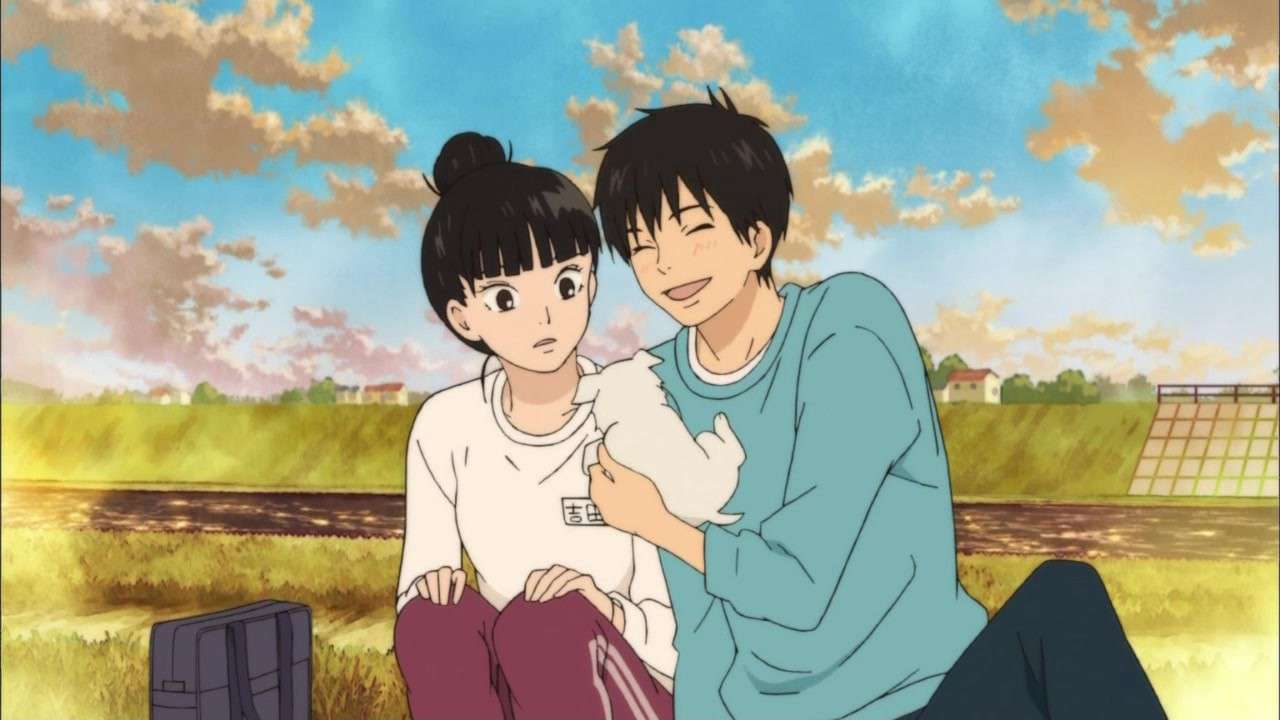
Due to her resemblance to the Sadako character of The Ring series, Sawako Kuronuma is given the nickname “Sadako.” and is misconstrued to be frightening and malicious as her fictional counterpart, despite having a timid and sweet nature.
As Sawako longs for friends and normal life, so she naturally gravitates toward the cheerful and friendly Shouta Kazehaya, one of the most popular boys in her class. Since their first meeting, Sawako has been awed by Kazehaya’s ability to be the center of attention.
Kazehaya organizes a courage test for the whole class, and Sawako is encouraged to attend so that she can get along with her classmates, starting with Ayane Yano and Chizuru Yoshida. Sawako believes Kazehaya has changed her for the better with each new encounter and emotion she experiences. Sawako is unaware of the fact that her presence has also changed Kazehaya.
A series rarely breaks the mold its genre has cast for it and even less often does it stand out from the rest. This is the case with Kimi ni Todoke. It flips all the classic shoujo romance stereotypes and plot devices on their heads, resulting in a truly satisfying and groundbreaking story.
The emotions and situations presented to us are real and powerful but not overly dramatic. Nobody has torturous childhoods, tragic pasts, or other situations that always seem forced in an attempt to create narratives that could be accomplished with better characters or storytelling.
While on the surface, Kazehaya and Sawako seem to be completely different people, deep down, they both share the same confusing emotions and fears about the feelings each has for the other.
Chuunibyou demo Koi ga Shitai!

We have all experienced that stage of our lives when we thought we were different from the masses of ordinary humans. Maybe they believe they possess mystical powers, or maybe they even believe they are descended from a fantasy realm. It is known as “chuunibyou” and has often caused people to experience some of their most embarrassing moments.
In Yuuta Togashi’s case, the scars left behind by his chuunibyou are still fresh. After posing as the “Dark Flame Master” during his middle school years, he looks back on those years with a great deal of embarrassment, so much so that he enrolls at a high school far away from where no one will recognize him. After putting his dark past behind him, he longs for a normal high school experience.
However, his past is still lurking around the corner: enter Rikka Takanashi, Yuuta’s new classmate and the self-proclaimed vessel of the “Wicked Eye.” When this eccentric young woman crashes into Yuuta’s life, his dream of an ordinary, chuunibyou-free life begins to crumble. This heartwarming and hilarious tale of a boy who wants to leave his embarrassing memories behind is a reminder that delusions are far from being a thing of the past.
The series is primarily about comedy and the events surrounding the main characters. Their high school days are like any other teenager’s, although the majority are anything but normal.
In the end, Chuunibyou demo Koi ga Shitai! is a very entertaining show. A kid tries to escape his past but ends up living it with his new friends at high school. Nowadays, entertainment is not that easy to bring, especially with so many used ideas already around, but this one here is executed quite well.
Working!!

Souta Takanashi, who loves small and cute things, cannot refuse childlike Popura Taneshima when she recruits him to work for Wagnaria, a family restaurant in Hokkaido. Takanashi takes special pleasure in pampering Popura, which only exacerbates her concern over how young she looks.
He also learns that he must keep his guard up after meeting the rest of the employees, including the katana-wielding floor chief Yachiyo Todoroki, the intimidating head chef Jun Satou, the dangerously well-informed and subtly sadistic sous chef Hiroomi Souma, the stubbornly lazy manager Kyouko Shirafuji, and the waitress Mahiru Inami who has a “painful” fear of men.
Working!! powered by an eccentric cast is a unique workplace comedy that follows the never-dull happenings within the walls of Wagnaria as Takanashi and his coworkers’ quirky personalities combine to create nonstop antics, shenanigans, and hilarity.
Story-wise, there isn’t much to tell. Takanashi simply starts working at a family restaurant with weird and unique employees and takes it from there. Working!! continues to be enjoyable despite the lack of a storyline because it makes up for it easily with its characters. The characters are really well done, they achieve what this anime is meant to do, and that is to make us laugh.
For most slice-of-life animes, good and memorable characters are usually required to make the show interesting and overall a good show in general. And Working!! certainly has that. It is these interactions between the characters that make the series what it is. It’s neither too complicated nor too simple.
Azumanga Daioh

As a tiny, 10-year-old academic prodigy who loves plush dolls and homemade cooking, Chiyo Mihama is one of the most unusual first-year students in her class. She has a homeroom teacher like Yukari Tanizaki who would take a student’s bike so they wouldn’t be late, so “strange” is relative.
There is no shortage of peculiar girls in Yukari-sensei’s homeroom class. Chiyo is accompanied by students such as Tomo Takino, an energetic tomboy who is more enthusiastic than smart; Koyomi Mizuhara, whose temper is short but her beauty is sweet; and Sakaki, a tall, athletic beauty who is a gentle soul with a profound obsession with cats.
Furthermore, transfer student Ayumu Kasuga, a girl with her head in the clouds, fits right in with her fellow classmates-and she has some interesting theories about Chiyo’s pigtails!
The lovable group of girls experiences the ups and downs of school life together, with constant laughter, surreal absurdity, and occasionally even poignant commentary on the bittersweet, temporal nature of the high school.
This is a slice-of-life anime, and what that means is there generally isn’t any story. But what it has plenty of is skits. A lot of skits, hilariously over-the-top skits. This show can be completely realistic or mind-bogglingly over the top. This show is best when it comes to its characters. This show has a variety of likable characters.
This show will make you laugh over and over again! The jokes are all well thought out and hilarious. It does not matter if the characters are just standing there, not talking and staring at each other; you will laugh.
Kotonoha no Niwa
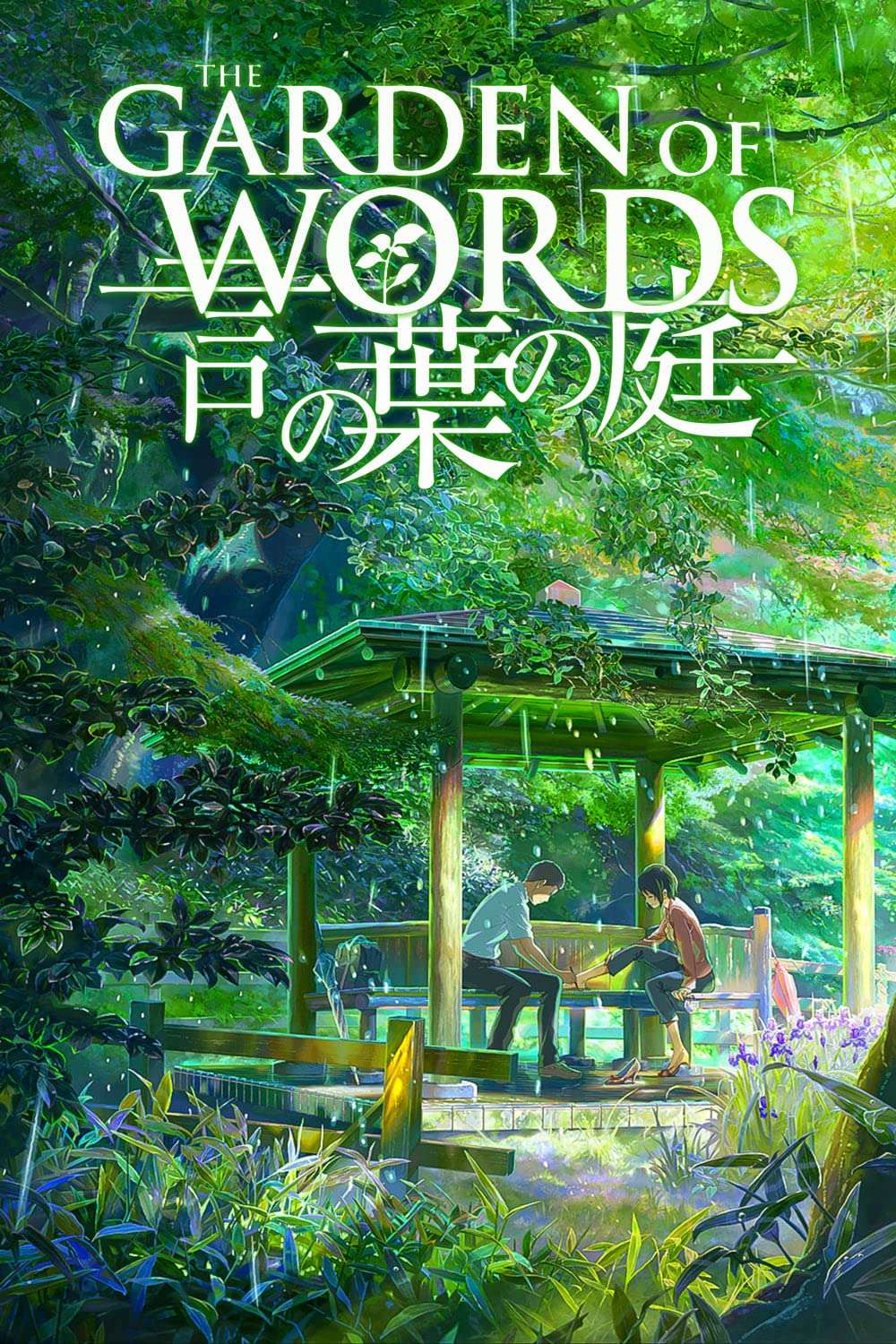
An aspiring shoemaker, Takao Akizuki, decides to skip class on a rainy morning in Tokyo to sketch designs in a beautiful garden. At this point, he meets a mysterious yet beautiful woman for the very first time, Yukari Yukino. With Takao offering to make her new shoes, Yukari meets with Takao throughout the rainy season, and unknowingly, the two are able to relieve the worries they have in their hearts simply by being together.
Despite that, their personal struggles have not completely disappeared, and as the end of the rainy season approaches, their relationship will be tested.
Initially, rain represents a fundamental necessity that our protagonists must meet. All of the plots revolves around the interactions between our two main characters: a young student and a mysterious grown-up woman.
As such, the dialogue is very minimal yet so powerful for a large portion of the development, and the insights that we gain into our protagonists rely on restrained and brief interactions. In most cases, it is the absence of dialogue that conveys human emotions more powerfully and emotionally than when spoken, and visuals play a significant role in enhancing these emotions.
A short film like this requires every element to contribute to the plot, and no element exists without reason – be it simple movements, scenery, music, or dialogue. Seeing how clearly and concisely deep emotions and underlying intentions are conveyed is truly impressive. Every detail has been put to good use.
In exploring human relationships, Kotonoha no Niwa takes a more nuanced and authentic approach.
Wotaku ni Koi wa Muzukashii
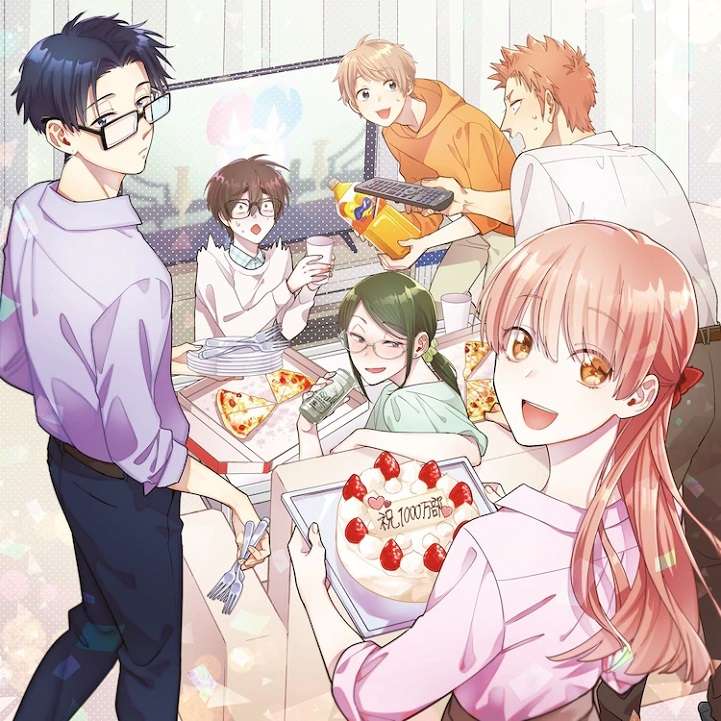
After sleeping through all four of her alarms, the energetic Narumi Momose finds herself running late for her first day at a new office. On her way to catch her train, she makes a promise to herself that no one in her office will find out about her dark secret: she is an otaku and a fujoshi.
However, her plan goes awry as soon as she runs into Hirotaka Nifuji, an old friend from middle school. Although she tries her best to keep it a secret, she is blown when he casually asks her if she will go to the upcoming Summer Comiket. It’s fortunate that the only witnesses are otaku as well, Hanako Koyanagi and Tarou Kabakura.
After their years apart, they go out for drinks later that night in order to catch up. When Narumi complains that her previous boyfriend broke up with her because he refused to date a fujoshi, Hirotaka suggests that she try dating a fellow otaku, specifically himself.
In return, he promises to always be there for her, to support her, and to help her farm for rare drops in Monster Hunter. Narumi is blown away by the proposal and agrees immediately. As a result, the two otaku start dating, and their adorably awkward relationship begins.
It has a very playful atmosphere due to the goofy storytelling and the colorful characters. It’s impossible to ignore the character chemistry between the main cast, even if the show takes place in an office environment. The small cast of characters is one of the main factors that make this show appealing. Each character gets a chance to shine without leaving another behind.
Tamako Market

The Usagiyama Shopping District is home to an eccentric but close-knit community of business owners. Tamako Kitashirakawa, a clumsy but adorable teenager, belongs to a family of mochi bakers who own a small shop called Tama-ya. One day, Tamako stumbles across a talking bird who claims to be royalty from a distant land.
His name is Dera Mochimazzi, and he says he is looking for a bride for his country’s prince. As part of his mission, Dera follows Tamako home and develops a mochi addiction, becoming heavy and unable to fly back to his homeland; he subsequently takes up residence with Tamako’s family and becomes the community’s beloved mascot.
At the same time, Tamako’s friend Mochizou Ooji hides his real feelings for her. Tamako and Mochizou’s fathers are fierce mochi rivals, but will this be enough to drive a wedge between them? What will become of Dera’s mission to find his prince’s destined bride?
The show captures the feeling of belonging to a close-knit community. There are people from all walks of life living in this town, and they interact with each other in simple yet heartwarming ways. This is a slice of life in the truest sense of the word.
The most laudable aspect of anime is the cozy atmosphere it manages to create. It’s as if nothing bad can happen here. It is definitely escapist – but in a different way than most anime. Tamako Market is a world you want to escape to and live in because it’s so simple and innocent. There could be a lot more good in the world if it was just a little bit more like Tamako Market. Such shows appeal to people for that reason.
Umibe no Étranger
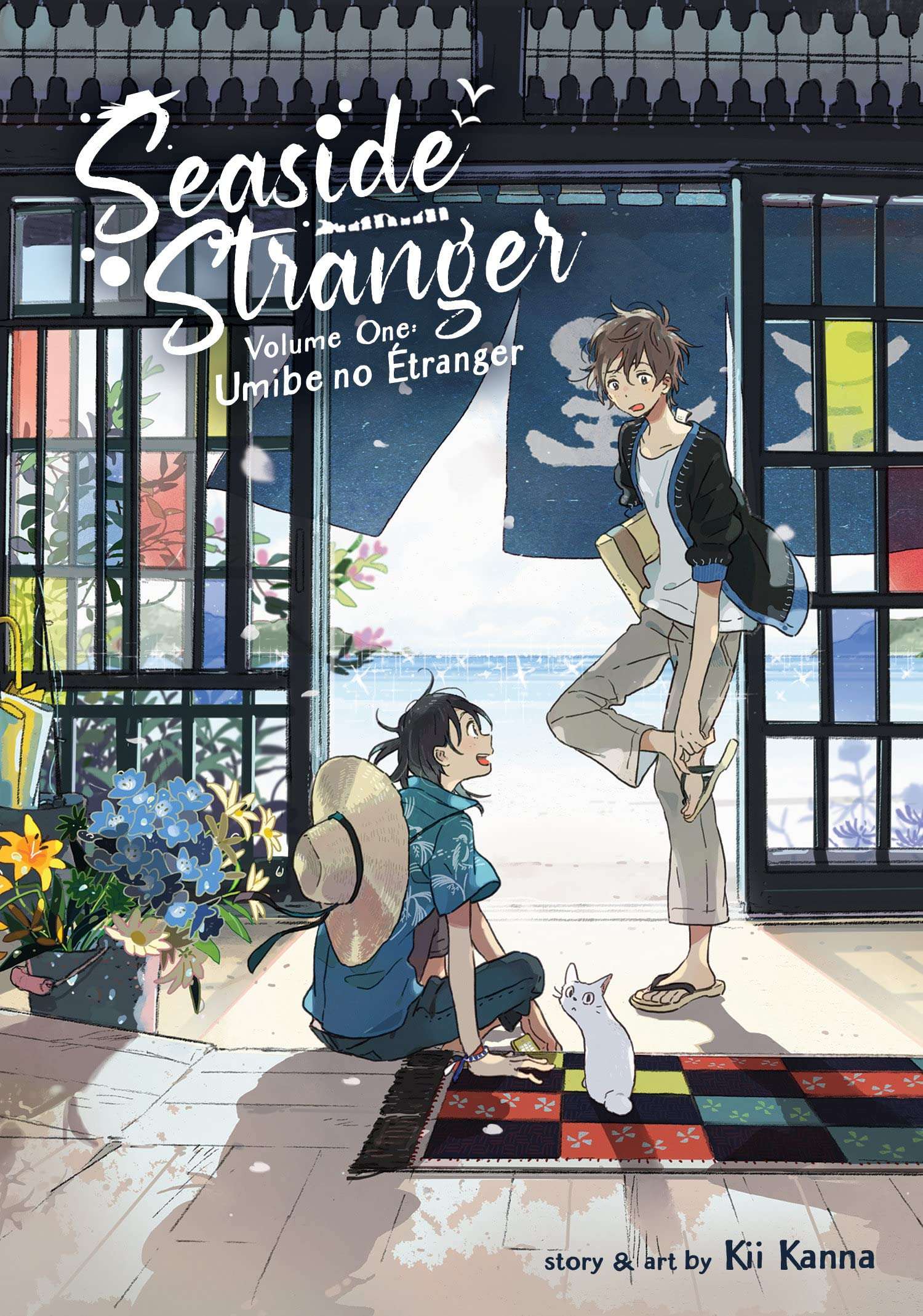
A gay aspiring novelist living in Okinawa, Shun Hashimoto was abandoned by his parents after coming out to them. Mio Chibana is a shy, orphaned high school student, usually found by the sea. On a beach one day, Shun and Mio meet, and Shun is instantly captivated by Mio. As the days pass, they slowly grow closer until suddenly Mio announces he must leave for the mainland.
After three years, a 20-year-old Mio returns to Okinawa to confess his love for Shun. However, Shun’s life has changed in those three years. Can he accept Mio’s feelings and make such a commitment?
Shun and Mio contrast with each other. Shun is a quiet novelist who, despite knowing about his sexuality before Mio, hasn’t accepted it. On the other hand, Mio is young, carefree, and comfortable confessing his love to Shun openly. Together, they balance each other out. Mio learns about Shun’s family situation, while Shun learns about Mio’s honest feelings for him.
When you feel the same way about someone of the same gender or sex, there is nothing wrong with it. Having lived most of his life with this impact, Shun comes to terms with the fact that this is who he is. The characters are all special in their own way; there’s not really anyone that you’ll dislike.
Umibe no Étranger is a story that bases itself on coming to terms with who you are and your situation. Growing up and experiencing pure first love is the theme of the story. It’s so refreshing to actually just enjoy a simple romance between the two.
Beastars

There exists an uneasy tension between herbivores and carnivores in a civilized society of anthropomorphic animals. This mutual mistrust reaches its peak at Cherryton Academy when a brutal event leaves Tem dead, an alpaca in the school’s drama club.
As a grey wolf, Legoshi, Tem’s friend in the stage crew, has been the subject of fear and suspicion his entire life. After the tragedy, he continues to lay low and conceal his menacing traits, much to the displeasure of Louis, a red deer and the domineering star actor of the drama club.
Legoshi is assigned to be Louis’ lookout when he sneaks into the auditorium to train Tem’s replacement for an upcoming play. Legoshi comes face-to-face with Haru that very night, a white dwarf rabbit scorned by her peers. He must confront his true self as his feelings for Haru grow, the complexities surrounding the death of his friend, and the constant threat of violence around him.
Characters have inner and outer sides; the one they are inside of themselves and the one they display to others, there is a clear depiction of each individual’s self-image, some awareness of how their self appears from the outside, even a few moments of reflection throughout the show.
While the focus is highly psychological, the presentation itself is of a philosophical nature. One would not expect, let alone see the depth, detail, planning, and polish at first glance. A thought or behavior does not seem out of place or controlled by the author behind the 4th wall at any point in the narrative.
Blue Period
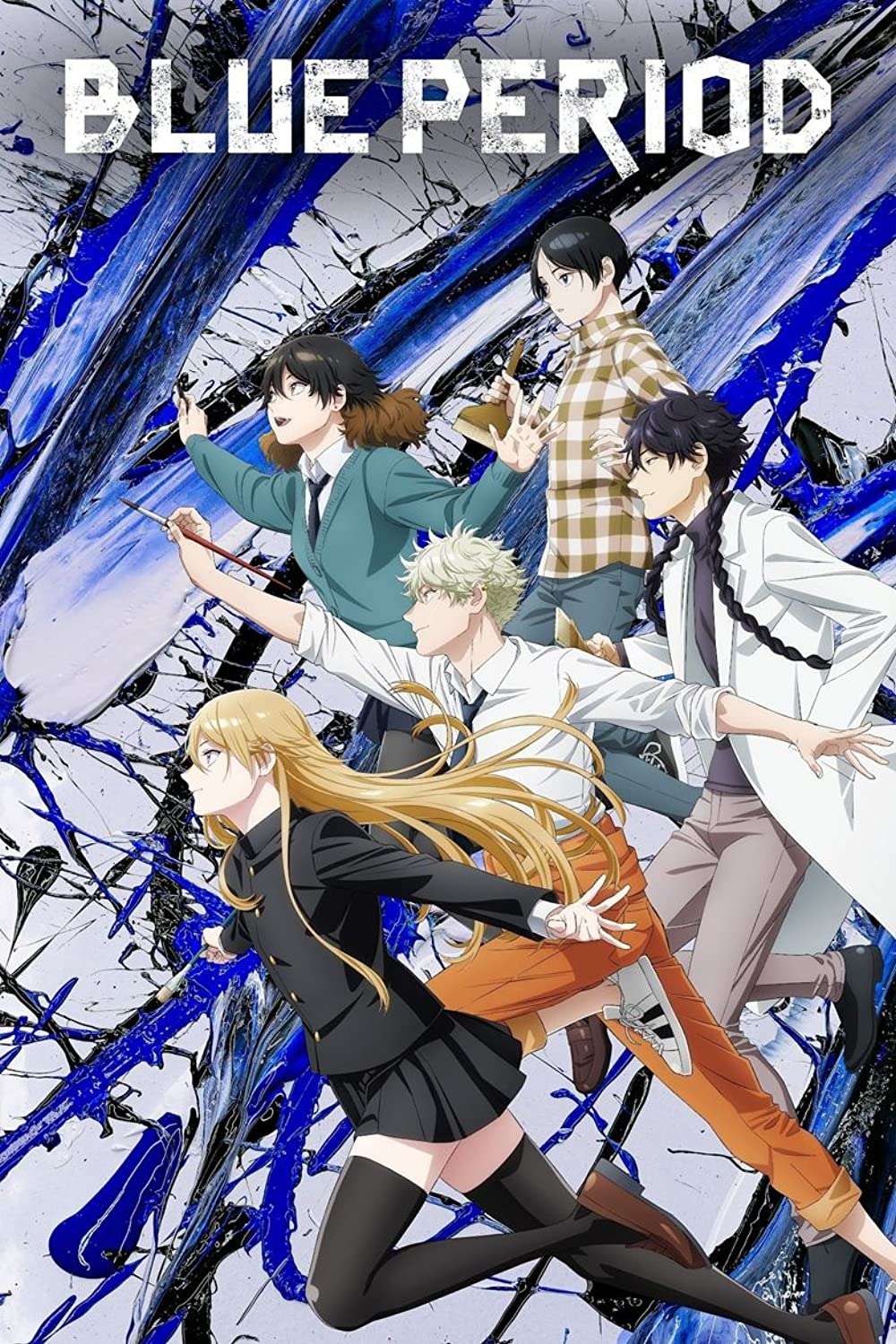
Yatora Yaguchi, a delinquent high school student, has strong academic credentials, but he lacks the motivation to find his true calling in life. Yatora spends his days trying to maintain his academic standing while hanging out with unambitious friends. Although Yatora appears carefree, he does not enjoy either activity and wishes he could find something more fulfilling.
While contemplating his predicament, Yatora finds himself staring at Shibuya’s vibrant landscape. Lacking the ability to express himself, he picks up a paintbrush, hoping his thoughts will be captured on canvas. In response to the praise he receives for his work, he embarks on a quest to enter the extremely competitive Tokyo University of the Arts, an institution that only accepts one applicant out of every 200.
Due to his talented peers, a lack of understanding of the fine arts, and the struggle to obtain his parents’ approval, Yatora is faced with much adversity. Yatora must prove that his inexperience does not define him in order to secure one of the five prestigious spots in his program of choice.
Characters are lovable, and MC is one of the more relatable shounen protagonists. His way of interacting with other side characters is really heartwarming and relatable.
Everyone goes through the thought of which line one should choose to be successful. Should one go for money or passion? Despite revolving around for many years, this ideology still manages to motivate people. Yaguchi’s daily struggle to become a better version of his past, absorbing what he sees around him, and competing with his peers in a subtle manner makes him a perfect protagonist.
Gakuen Babysitters
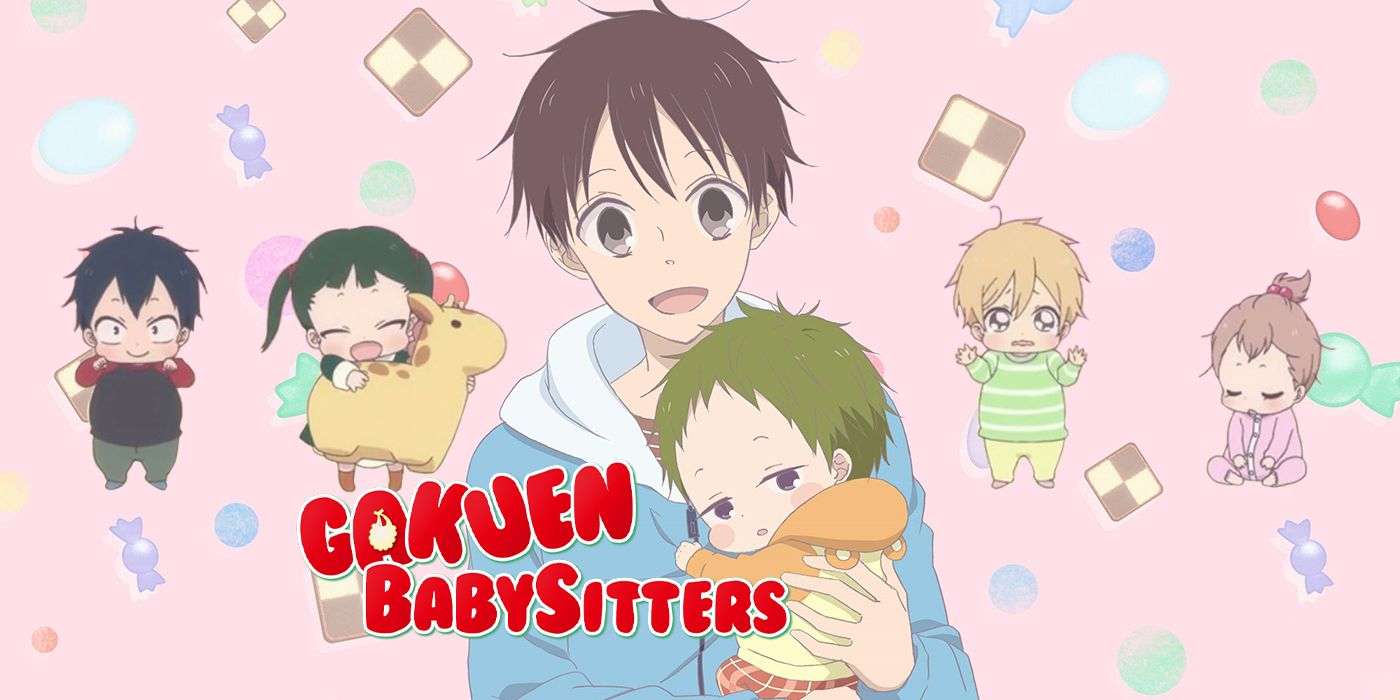
While caring for his younger brother Kotarou, Ryuuichi Kashima must adjust to his new life after losing both parents in a plane crash. Even though Ryuuichi maintains a friendly and kind demeanor, Kotarou is still too young to understand the reality of the situation. Their parents’ funeral is attended by Youko Morinomiya, the stern chairman of an elite academy who decides to take them under her wing.
Ryuuichi’s only condition for a roof over their heads and enrolment at the school is that he serve as the school’s babysitter. The academy set up a babysitter’s club to care for the infants of female teachers; however, the club is severely short-staffed, so Ryuuichi is now also responsible for a handful of energetic toddlers.
You can’t go wrong with Gakuen Babysitters. It’s not that exciting or thought-provoking. It accomplishes its purpose: to be a relaxing and sweet anime about children and their families, or, in some cases, what’s left of them.
The show introduces some awesome characters along the way. As well as the kids in the club, we also get the chance to meet the individual in charge of the club when Ryuuichi is in class, as well as the kids’ parents and Ryuuichi’s classmates.
The development and story over time in this series are really well done. At times you find yourself holding back tears, and other times you find yourself rooting for certain characters to come over their fear of doing something, for example, just playing with the children.
Tanaka-kun wa Itsumo Kedaruge
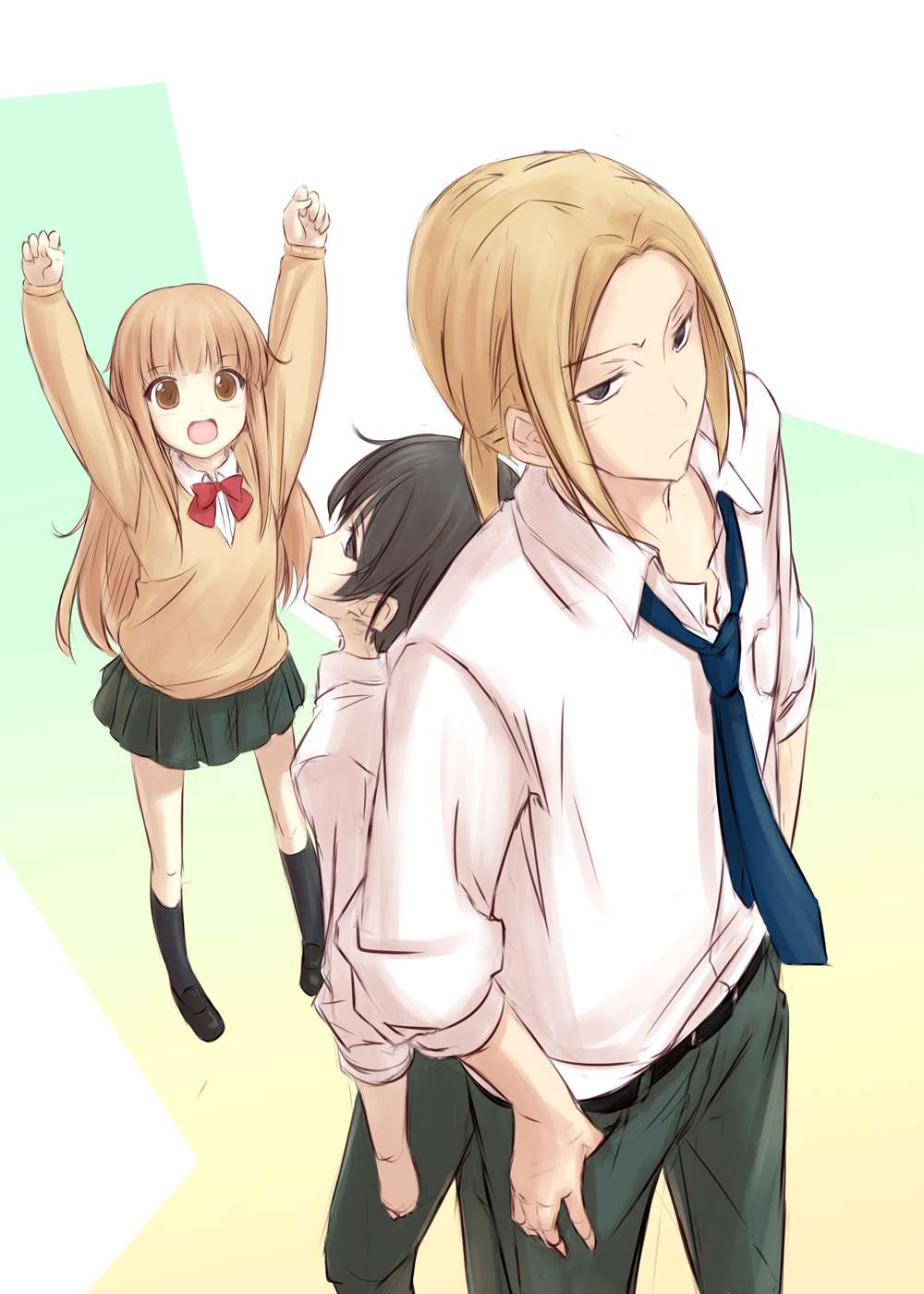
Living a listless life is a way of life for high schooler Tanaka. Tanaka is well known for his inattentiveness and his ability to fall asleep anywhere, and he prays for each day to be as uneventful as the last, seeking to preserve his lazy lifestyle by avoiding situations that would require him to exert himself.
He constantly has to deal with events that prevent him from experiencing the quiet and peaceful days he longs for, along with his reliable friend Oota who assists him in tasks he is unable to accomplish.
In this story, not much is attempted; it is a barebones premise that, surprisingly, turns out to be highly entertaining due to its freedom for imagination and creativity.
A great blend of comedy and slice-of-life is evident in the show. In it, it borrows conventional school tropes and clichés with a listlessness twist that works really well. At first, the laid-back atmosphere seems too dull for relaxation, but the charming cast makes it lively.
Comedy relies on character reactions whenever an awkward situation occurs. While the reactions aren’t excessively exaggerated, as they are in rapid slapstick comedies, they are well-timed, giving the audience plenty of time to react.
While Tanaka’s listless delusions are absurd, because of their absurdity, they work well when he is surrounded by a reoccurring cast that deals with and reacts to his personality. There is no doubt that listlessness is problematic, but as long as someone helps you out, you can deal with it.
This show is a fun slice-of-life comedy with a refreshing approach to comedy. Putting this on after having a bad day can really relax you and make you laugh as you watch.
K-On!

It’s always exciting to begin a new high school year, and joining a club is one of those things. Yui Hirasawa, the unsure which club to join, stumbles upon and joins the Light Music Club, which she misunderstands to be about playing simple instruments, such as castanets. She decides to apologize and quit when she is unable to play an instrument.
Because of a lack of members, the Light Music Club is at risk of disbanding. In order to entice Yui to join, the club members offer anything from food to slacking off during club time. Due to her lack of musical experience, Yui insists on leaving despite their efforts. Yui is finally convinced to join the club when they play a piece for her as a last resort.
After that, it’s merely a matter of messing around with bits and pieces of practice. Light Music Club members are ready for a delightful time together!
Each episode begins with a character introduction, and they entertain you with nothing but their own personalities and imaginations. In contrast to a villain who pulls all the strings, each character drives the story forward in their own way.
There are many occasions in which each member of the main cast demonstrates their unique personality traits. Everyone has their own struggles and joys. When they are together, they fit well together, and their interactions are very entertaining. To put it simply, the characters are extremely polished, consistent, and enjoyable to watch and listen to.
It’s a fun anime that will make you laugh at the characters’ interactions and jokes with music and behavior. When combined with a great soundtrack and very good animation, we have a fun anime to watch.
Suzumiya Haruhi no Yuuutsu
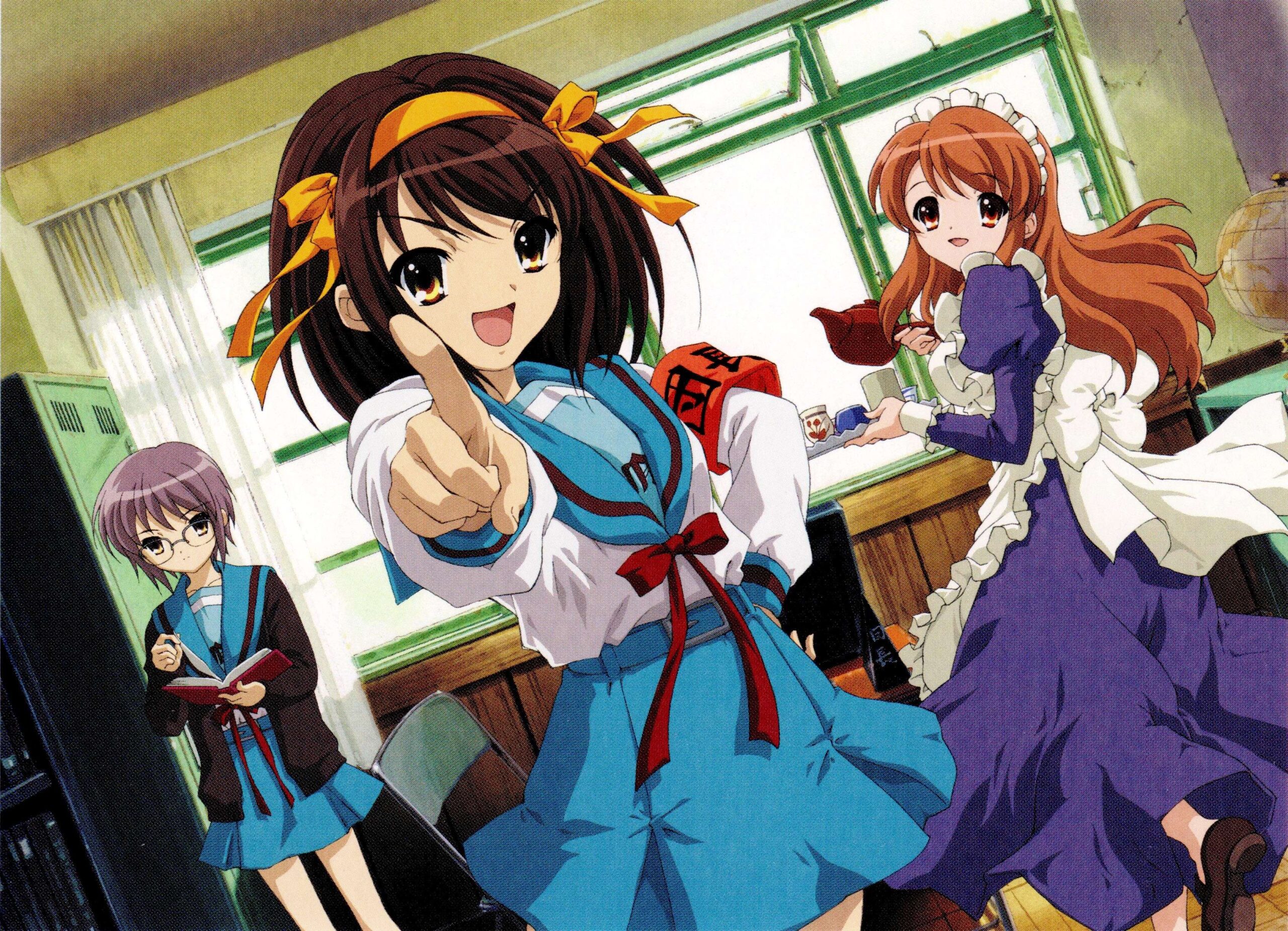
Typical high school student Kyon no longer believes in the supernatural. Upon meeting Haruhi Suzumiya, however, he quickly discovers that she is interested in the supernatural – aliens, time travelers, and espers, among others. Haruhi laments the lack of interesting clubs at school, and Kyon inspires her to start her own. In response, the SOS Brigade is formed, a club that specializes in everything supernatural.
Kyon is recruited to the club along with Yuki Nagato, the silent bookworm, Mikuru Asahina, a shy and timid member, and the perpetually smiling Itsuki Koizumi. The story follows the crazy adventures these four endure under Haruhi’s whimsical leadership.
Suzumiya brings new light and brilliance to something we didn’t know could exist. It brings pure genius comedy and an excellent array of characters to keep you hooked.
The best part of this show is the very unique cast of characters. It is really very rare to be able to like all the characters. Each one of the main characters is so likable it’s hard to pick a favorite, and even minor supporting characters are alive with hilarious personalities – many supporting characters could probably star in their own series. Each character appeals to you in its own way. But the biggest factor is the subtle change and growth of the characters.
This is a show that you’ll have to watch over and over in the wrong and right order to fully enjoy it. There’s plenty of comedy to enjoy; nevertheless, there are also some spectacular action sequences.
Love Live! School Idol Project

A crisis has erupted at Otonokizaka High School! The school is set to close after its current first-year students graduate because enrollment is dropping every year. Honoka Kousaka, a second-year student, refuses to give up.
After searching for a solution, she discovers the popular school idol group A-RISE and decides to start her own group. Honoka and her childhood friends Umi Sonoda and Kotori Minami form μ’s, pronounced “muse,” to spread awareness and popularity of her school.
It’s easier said than done, unfortunately. Eri Ayase, student council president, vehemently opposes the establishment of a school idol group and is determined to prevent it. Furthermore, Honoka and her friends have difficulty gaining new members.
Nonetheless, Love Live, a competition to determine the best and most popular school idol groups in Japan, will help them gain the attention they urgently need. To save Otonokizaka High School, Honoka must try and bring together a school idol group and win the Love Live contest quickly and diligently.
The plot for Love Live! is very straightforward, enjoyable, and easy to follow. Although not very complex, the plot serves as a solid foundation for the anime, is consistently present, and keeps the story moving forward.
Love Live! ‘s main theme is to never give up no matter how impossible the road ahead may seem and to remember that your friends are there for you every step of the way. Keeping your dreams alive is another important part of the theme.
It doesn’t matter how many obstacles and setbacks there are in the way; the prize at the end of the road is worth the journey.
Free!

Water and swimming are dear to Haruka Nanase’s heart. During elementary school, he participated in and won a relay race with his three friends Rin Matsuoka, Nagisa Hazuki, and Makoto Tachibana. After winning the tournament, the four friends went their separate ways.
Several years later, they reunite as high school students, but Rin couldn’t care less about going back to the way things were. In addition to attending a different school, all that matters to him is proving that he is a better swimmer than Haruka.
Haruka, Nagisa, and Makoto decide to form the Iwatobi High School Swim Club after a bitter reunion, but a fourth member is needed to take part in the upcoming tournament. Nagisa recruits Rei Ryuugazaki, an ex-member of the track team. As the competition approaches, the four bond closely and train intensely to settle things between Haruka and Rin once and for all.
While there isn’t anything spectacular about the spot, it’s refreshing; it’s about friendship and loyalty, overcoming obstacles with the help of others, and having faith in yourself instead of living a lie. There is something beautiful about this series: the idea of true friendship and how friends stay together forever, the intricate characterization, and the almost perfect art and sound.
An important aspect of this anime is the emotional side; a lot of the story is told through loaded gestures and hidden meanings. These elements make an otherwise simple story quite interesting.
Despite the predictability of the characters, the development compensates. Characters evolve together, and if you compare the first episode to the last, you’ll easily realize that.
Seitokai Yakuindomo

Shino Amakusa, the student council president at Ousai Private Academy, which used to be an all-girls school, calls Takatoshi Tsuda out for his untidy uniform on his first day of high school. Shino offers Takatoshi the position of vice president of the student council to apologize for delaying him for his first-class and to accommodate the arrival of boys at the school.
Even though he is unwilling, Takatoshi is appointed as the newest member of the student council before stepping foot inside the school.
Takatoshi soon realizes that other student council members are more than a little off-putting: President Shino, who appears serious but is actually a huge pervert, fascinated by erotica and always making lewd jokes; Aria Shichijou, the secretary, who may seem like a typical sheltered rich girl, but is just as risque as the president; and finally, Suzu Hagimura, the treasurer, who may act normal, but has a body like an elementary school student and is extremely self-conscious about it.
As a result of these colorful characters, the new vice president must now deal with an assault of sexual humor and insanity nonstop.
Seitokai Yakuindomo does not have a lot of unique characters. As a whole, the characters share some of the usual characteristics of anime. In spite of this, the characters are well suited to their roles, and as a result, the humor works well.
At the end of each episode, you may not walk away amazed, but you will walk away with a few good laughs.
Lucky☆Star
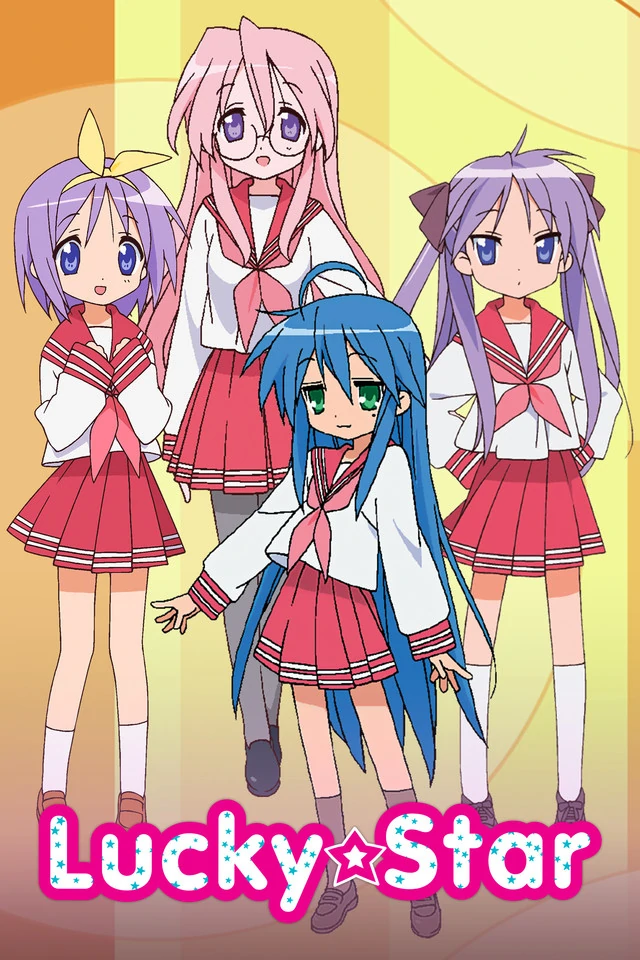
In Lucky Star, four cute high school girls live their daily lives: Konata Izumi, the lazy otaku, the Hiiragi twins, Tsukasa and Kagami, and Miyuki Takara, the smart and well-mannered girl.
While they go about their school and beyond lives, they develop their eccentric and lively friendship and make humorous observations about the world around them. Be it Japanese tradition, the intricacies of otaku culture, academics, or the correct way of preparing and eating various foods—no subject is safe from their musings.
A comedy anime like Lucky Star comes very rarely. Comedy is injected into everyday occurrences, as well as pop culture references. Its structure follows more of a western-style of comedy, a sitcom, than your typical slice of life anime.
This series does not have a direct storyline like most anime series do. Its humor is derived from everyday observations and J-pop culture. It’s hard not to enjoy the comedy in this show because it hits so many things perfectly and covers so many angles.
The characters are perhaps the strongest aspect of the show. The cast of Lucky Star is great. The variety in the show and the way they fit so well together really make the show stand out. Whether you come to like this show or not, there will be at least one character that you can’t help but like.
Overall, this is a very enjoyable show. If you enjoy the kind of humor the show presents, this will quickly become one of your favorite shows.
Uramichi Oniisan
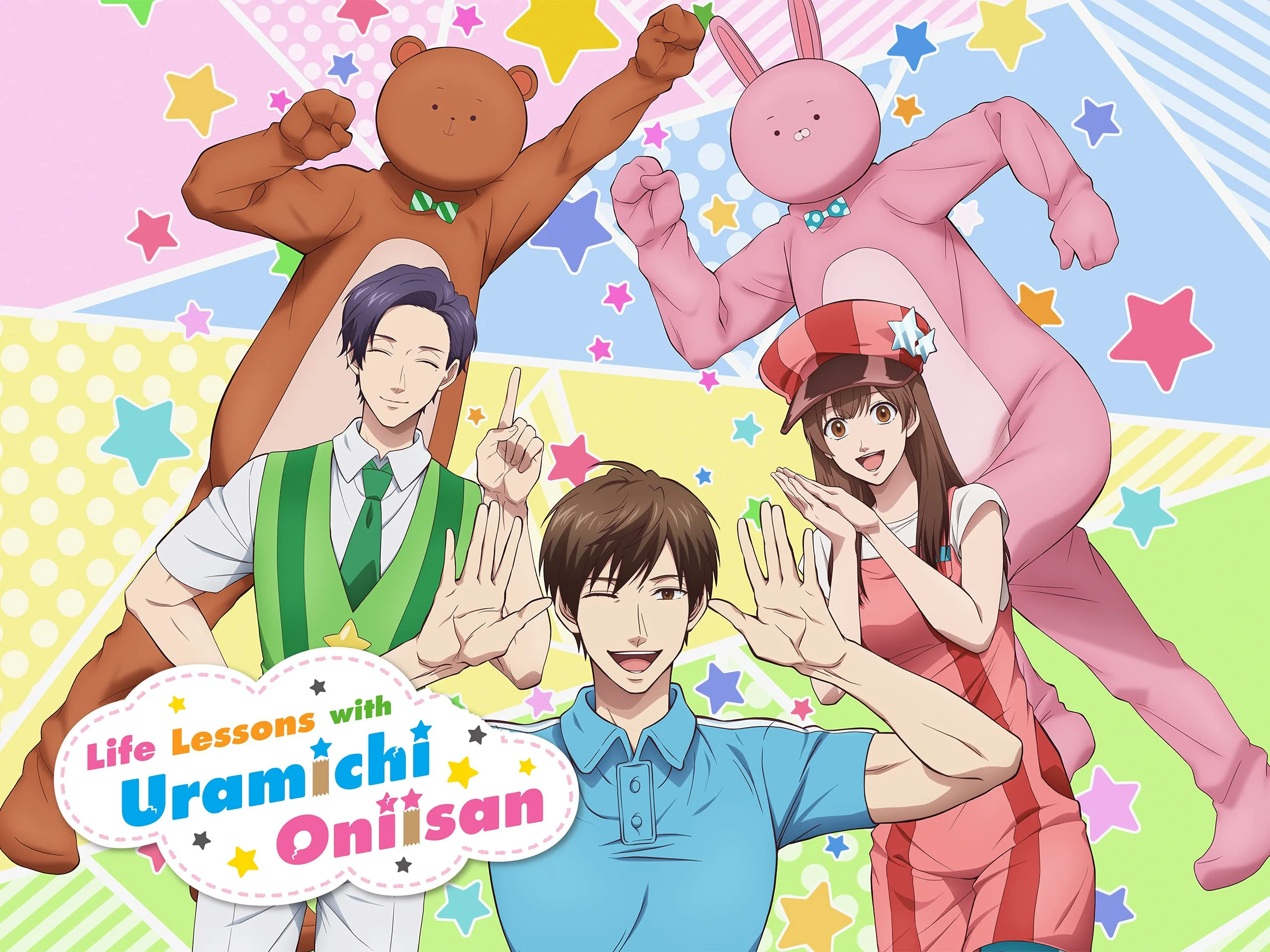
A group of miserable adults creates their facades of amicable smiles and smiling faces for the morning children’s show “Together with Mama” to educate an innocent audience. Uramichi Omota, a former gymnast who reveals the harsh realities of adulthood even in front of the cameras, stands in the middle of it all.
Uramichi’s much-sought peace is interrupted by his two bothersome juniors, who are the rabbit and bear mascots and singers for the show: Utano Tadano, a woman who only wants to marry, and Iketeru Daga, a man with a crass sense of humor. Everyone’s big brother Uramichi is never shy about bringing up the not-so-moral aspects of his life lessons, from smoking and exercise to nihilistic outbursts.
Seeing this anime and how it’s always depicting the miserable life of a grown-up adult is so refreshing, and it may help you realize that life is not all about sunshine sooner rather than later.
As an original show, this is a show that is full of unexpected moments and dark humor with its sad and depressing jokes for adults. Even though this anime may be a bit much for some people due to its blatant sarcasm, it is a show that will never shy away from its basic idea of mocking the lives of pathetic grown-ups.
Characters present in the show have two sides, one shown on television and the other their real or adult side.
